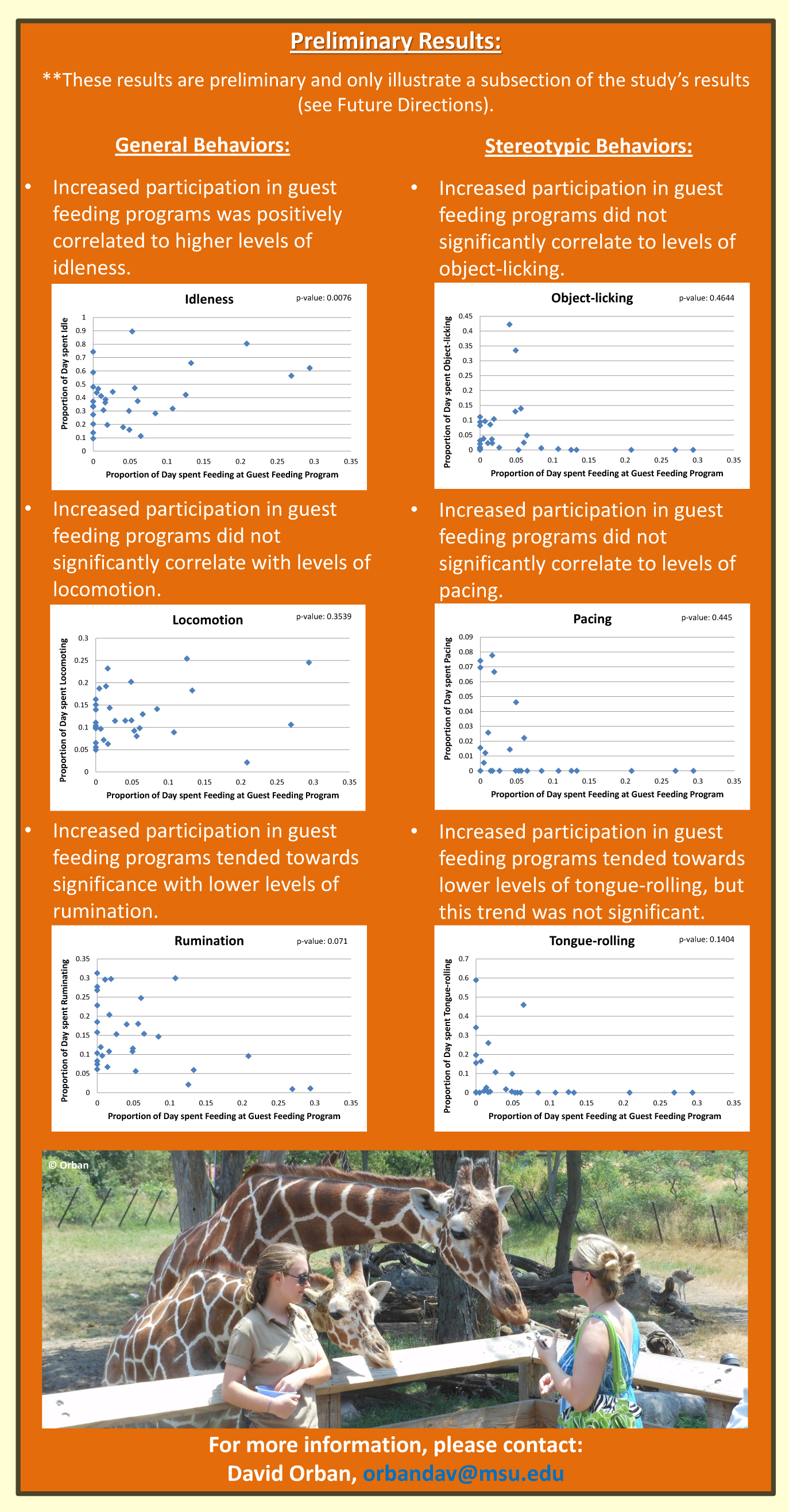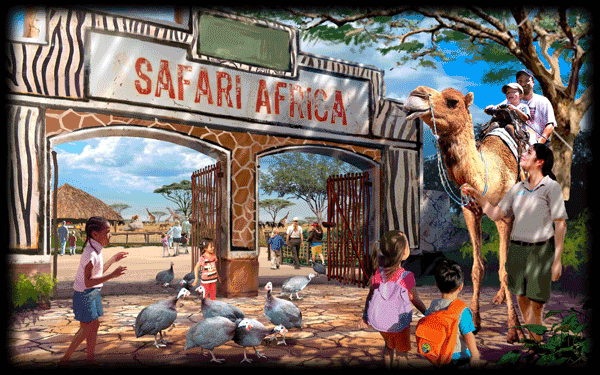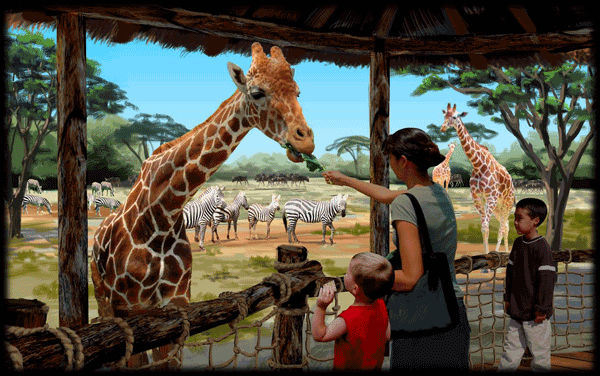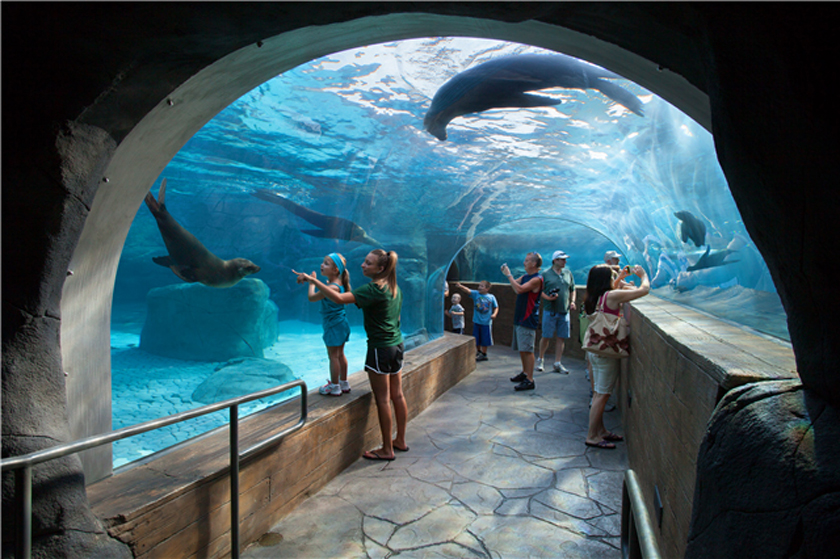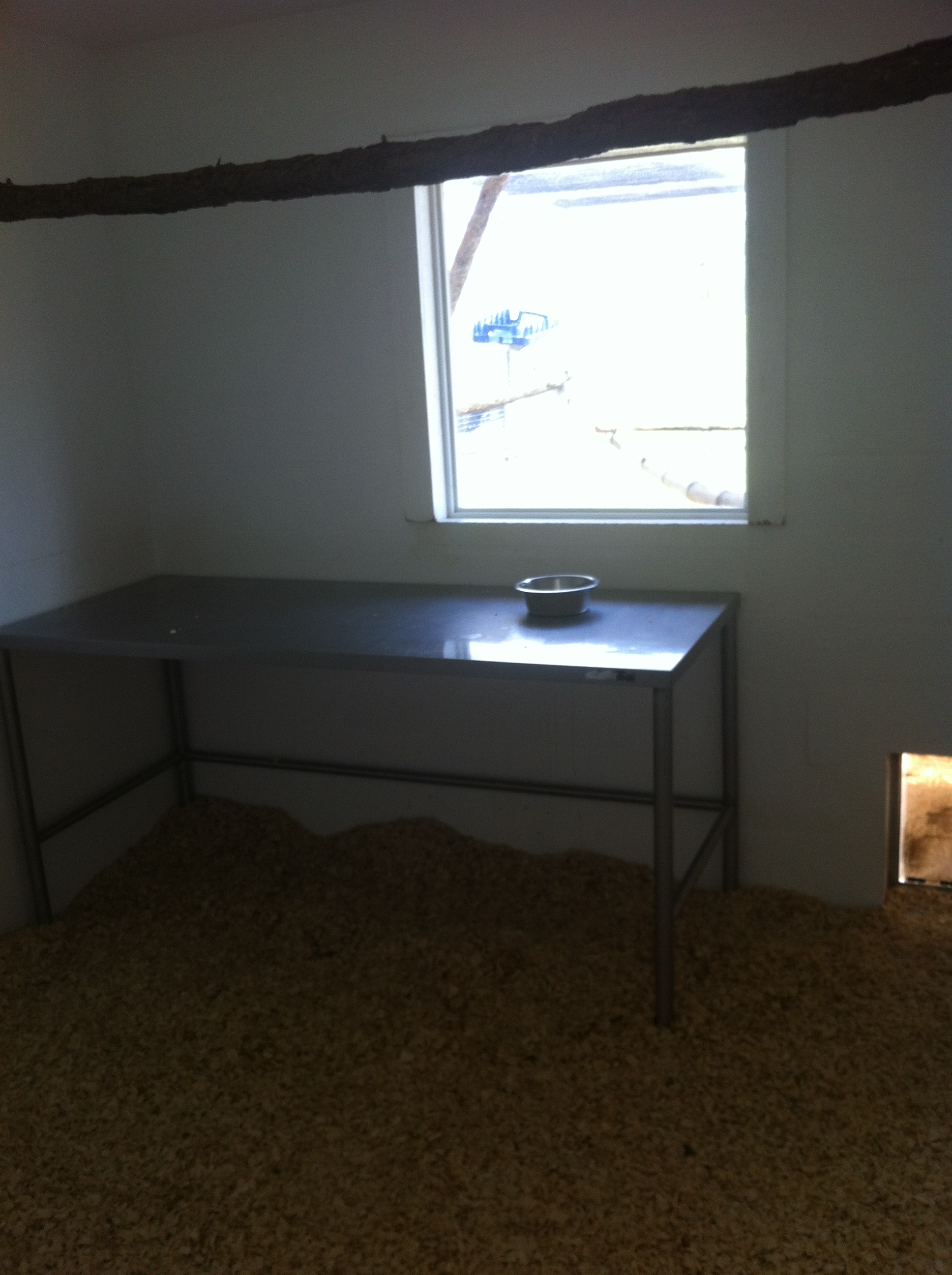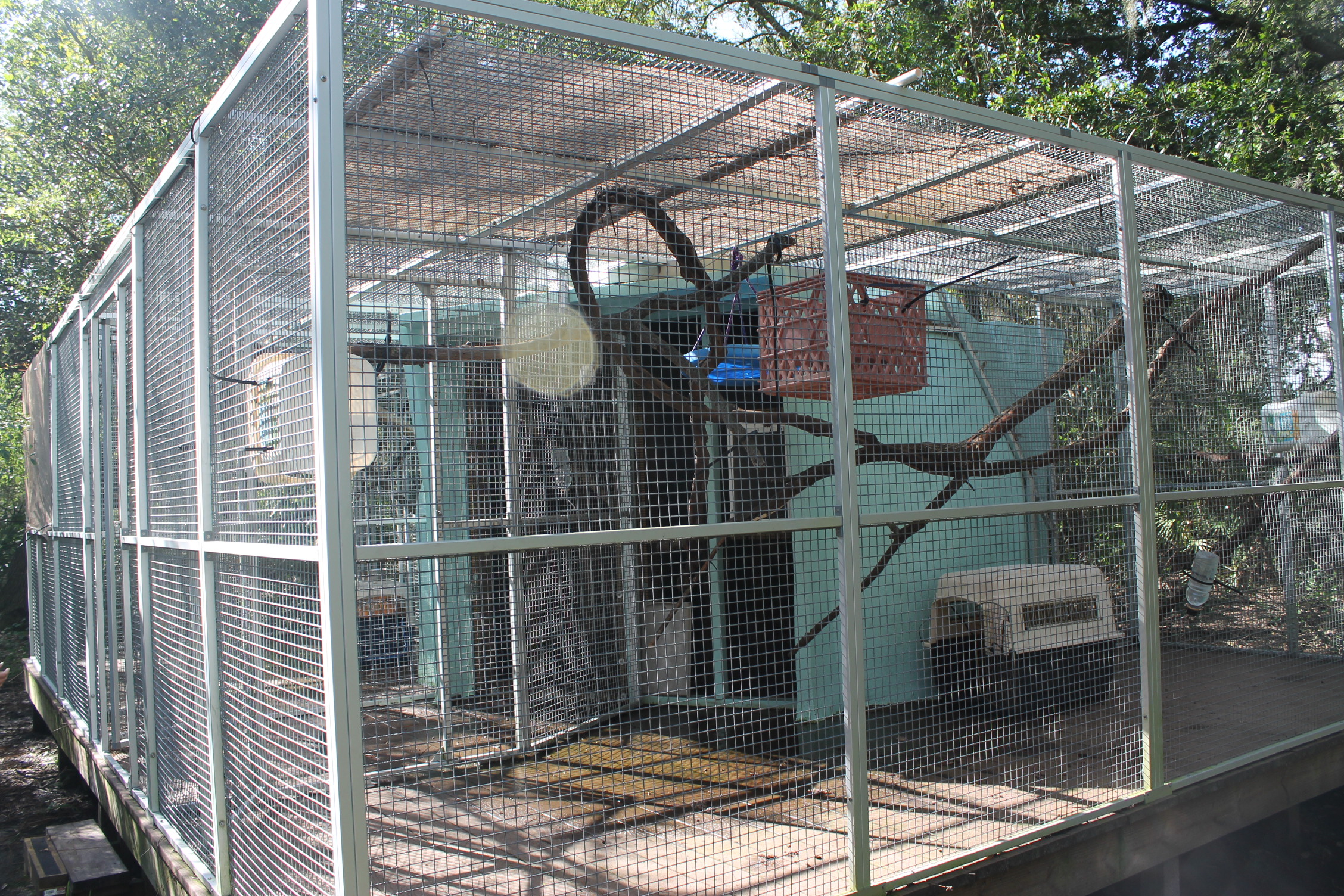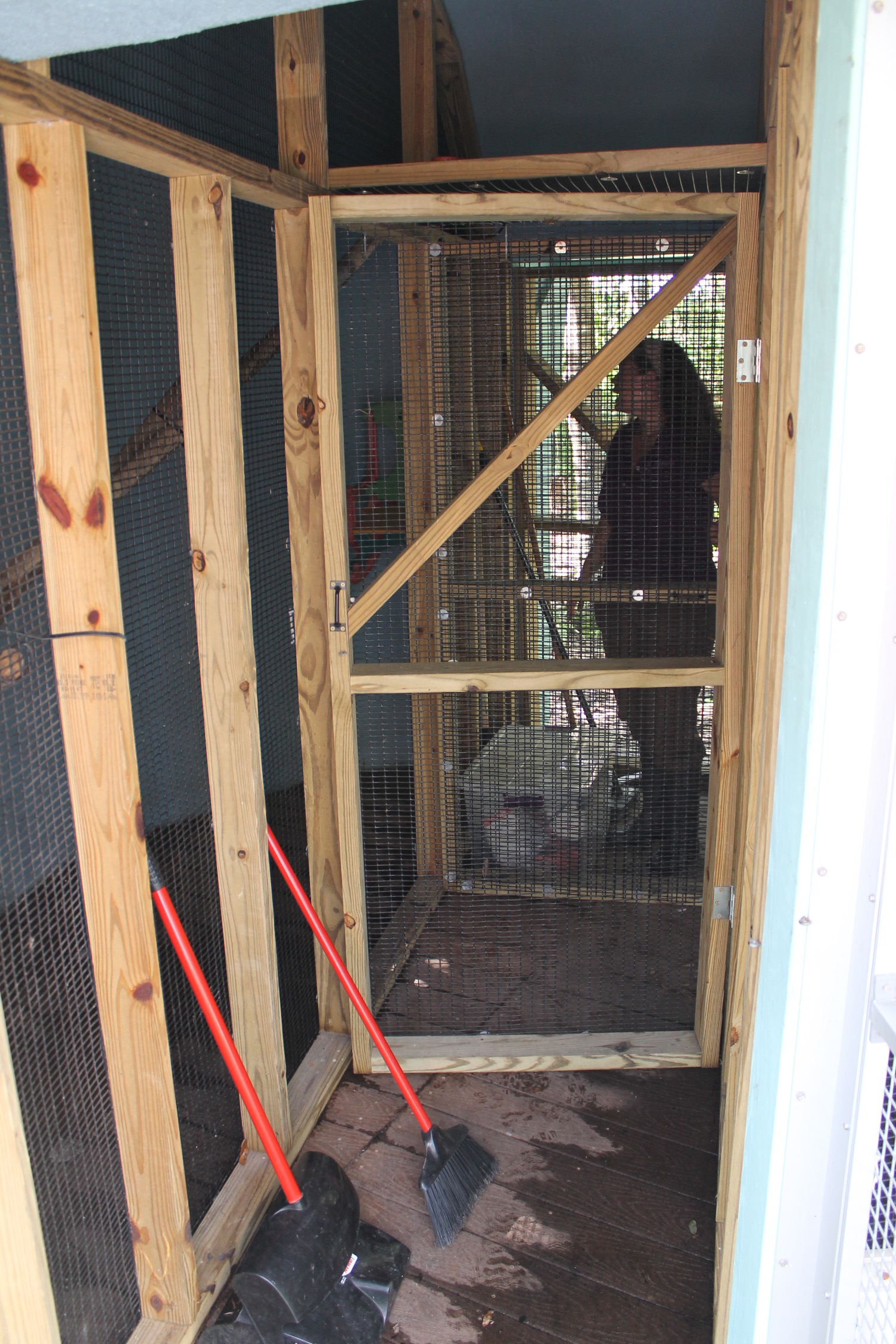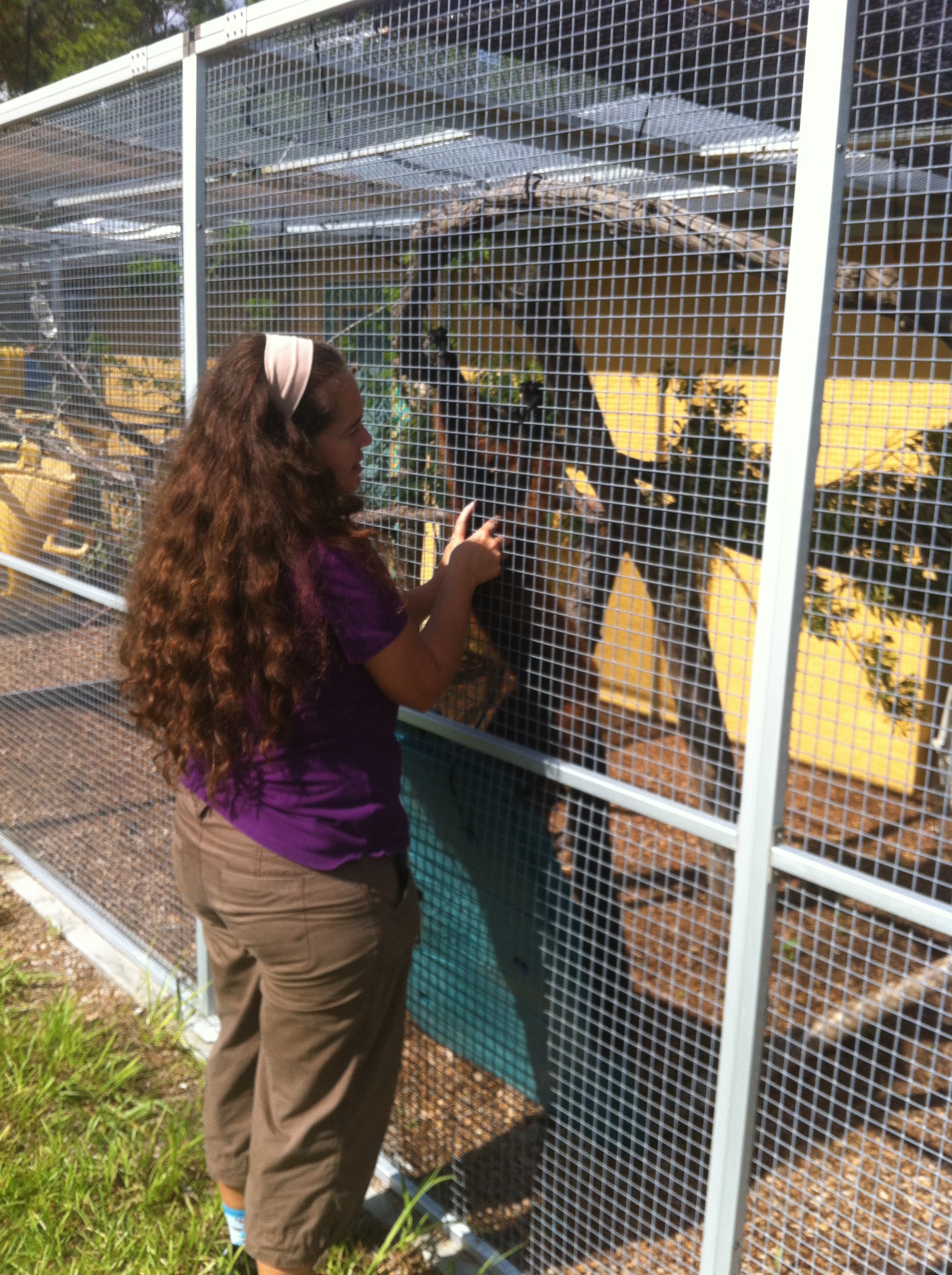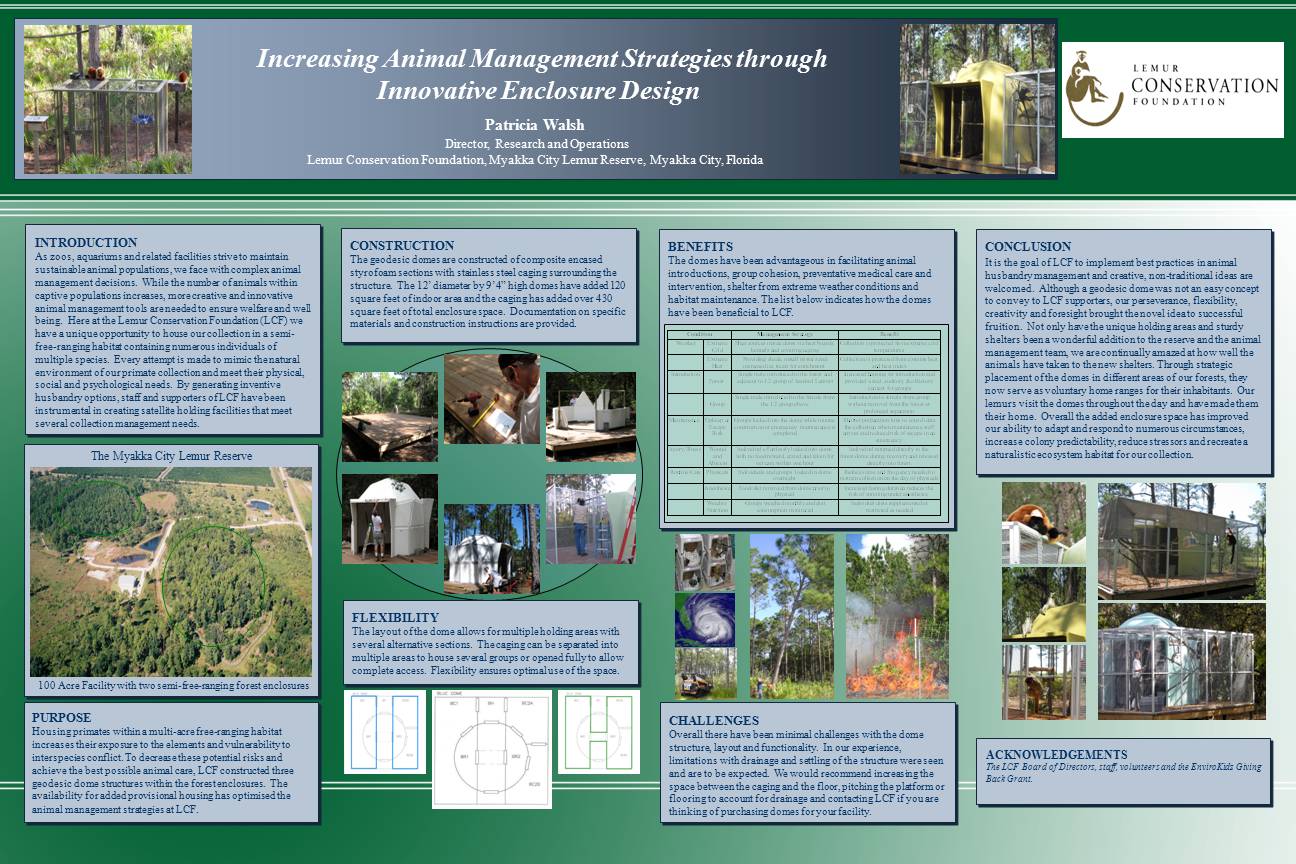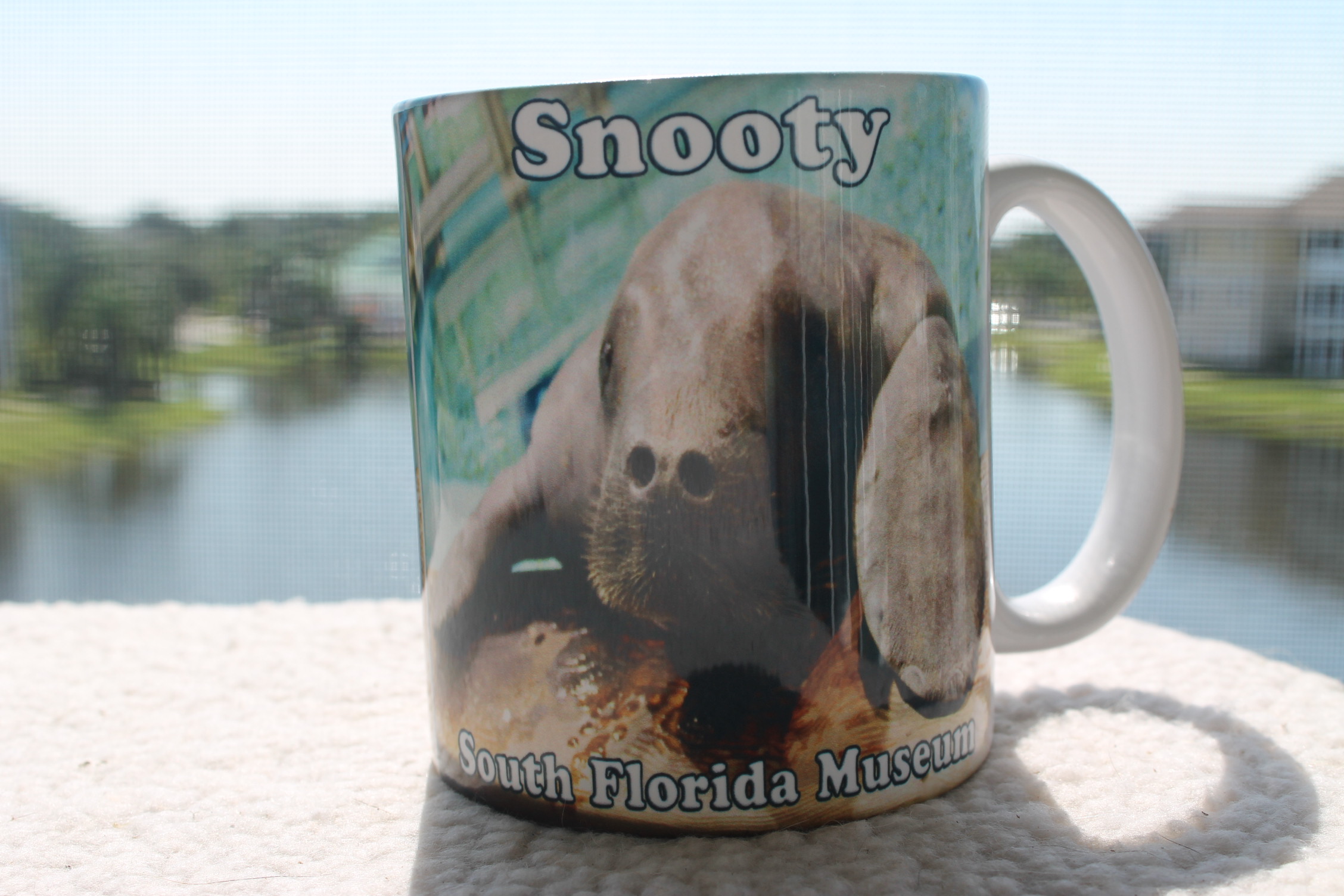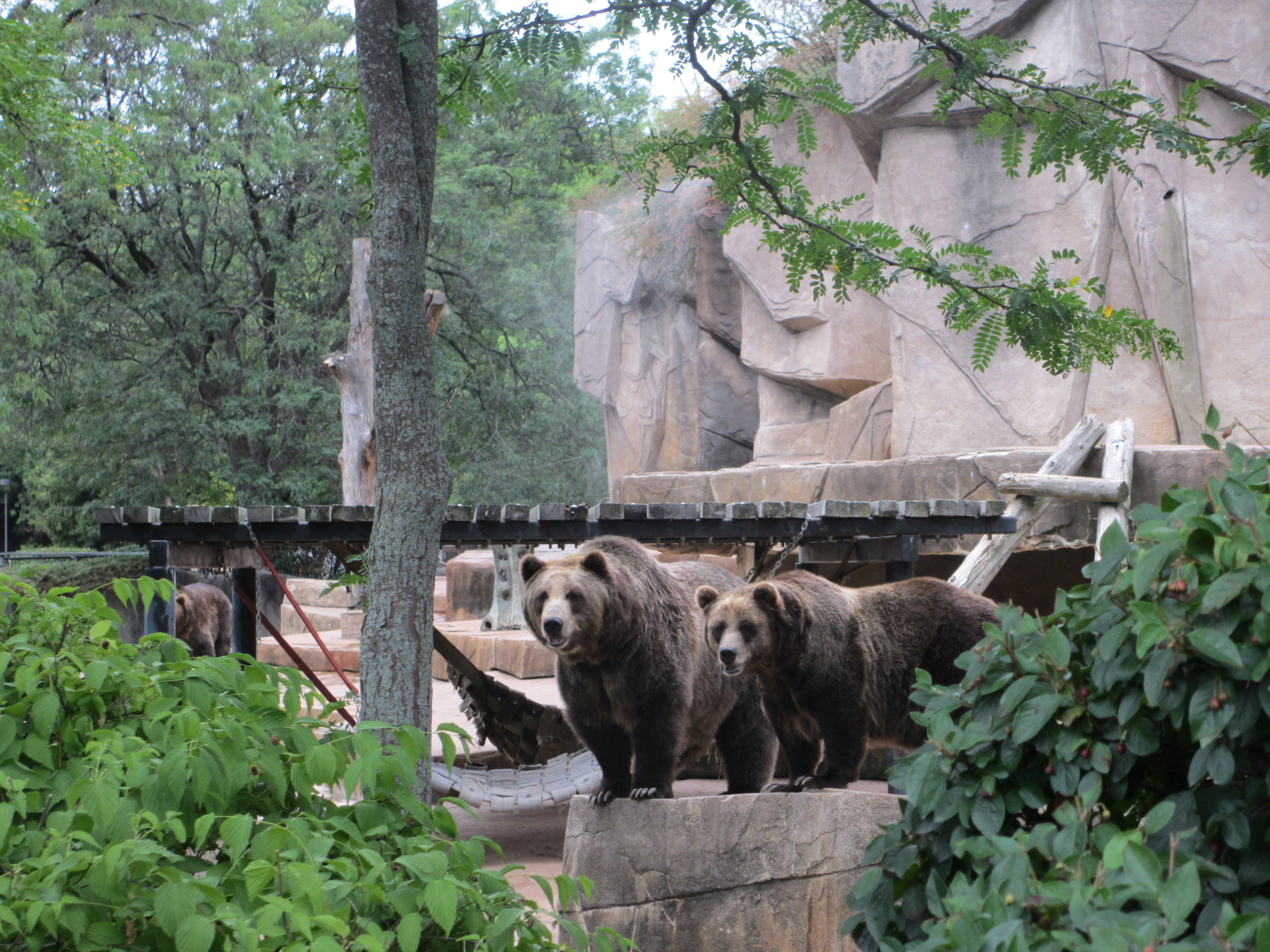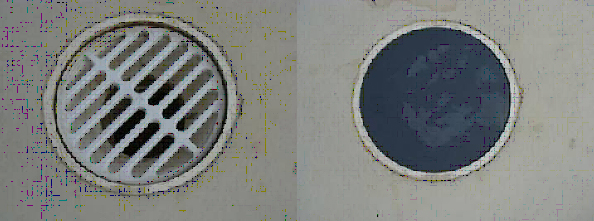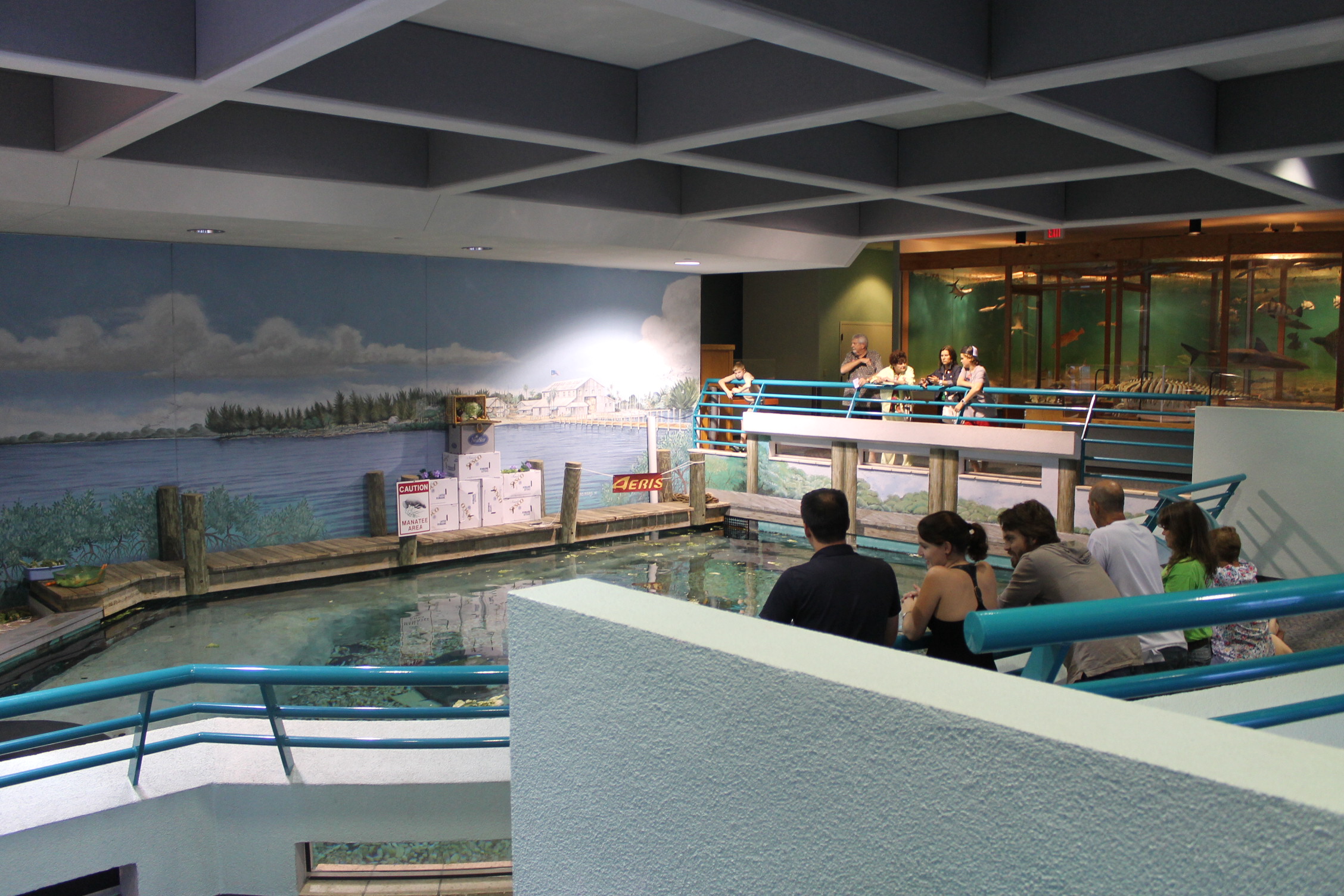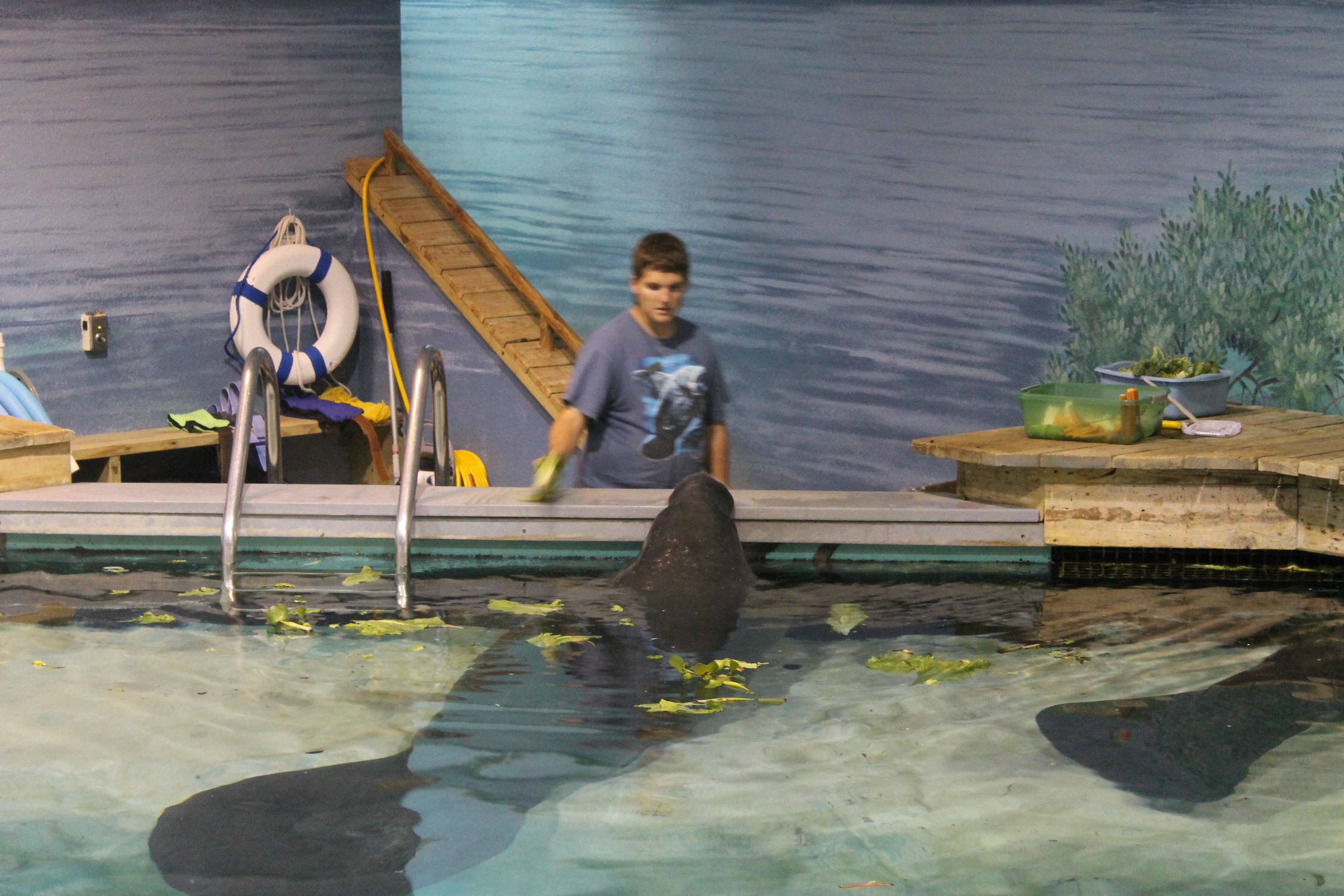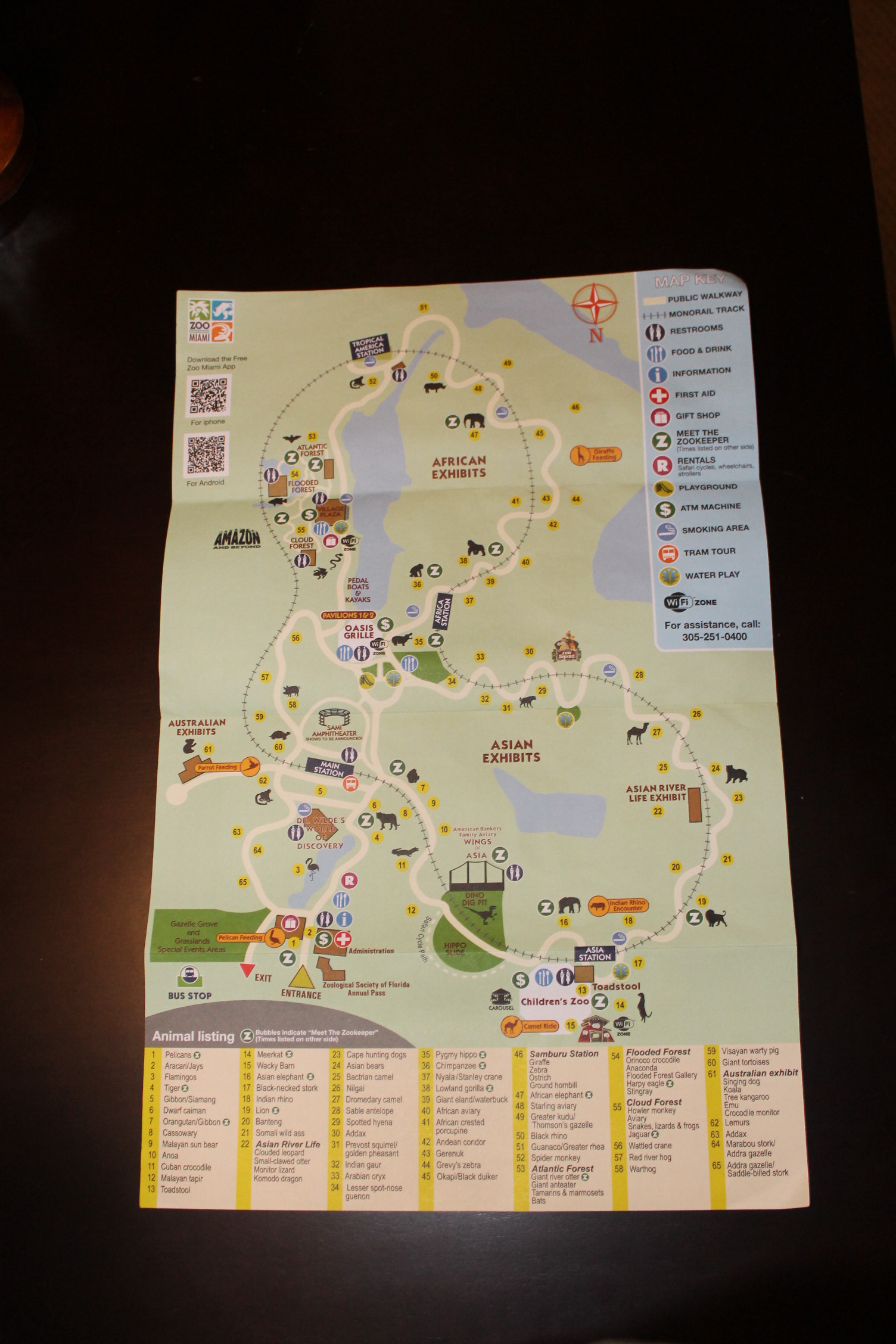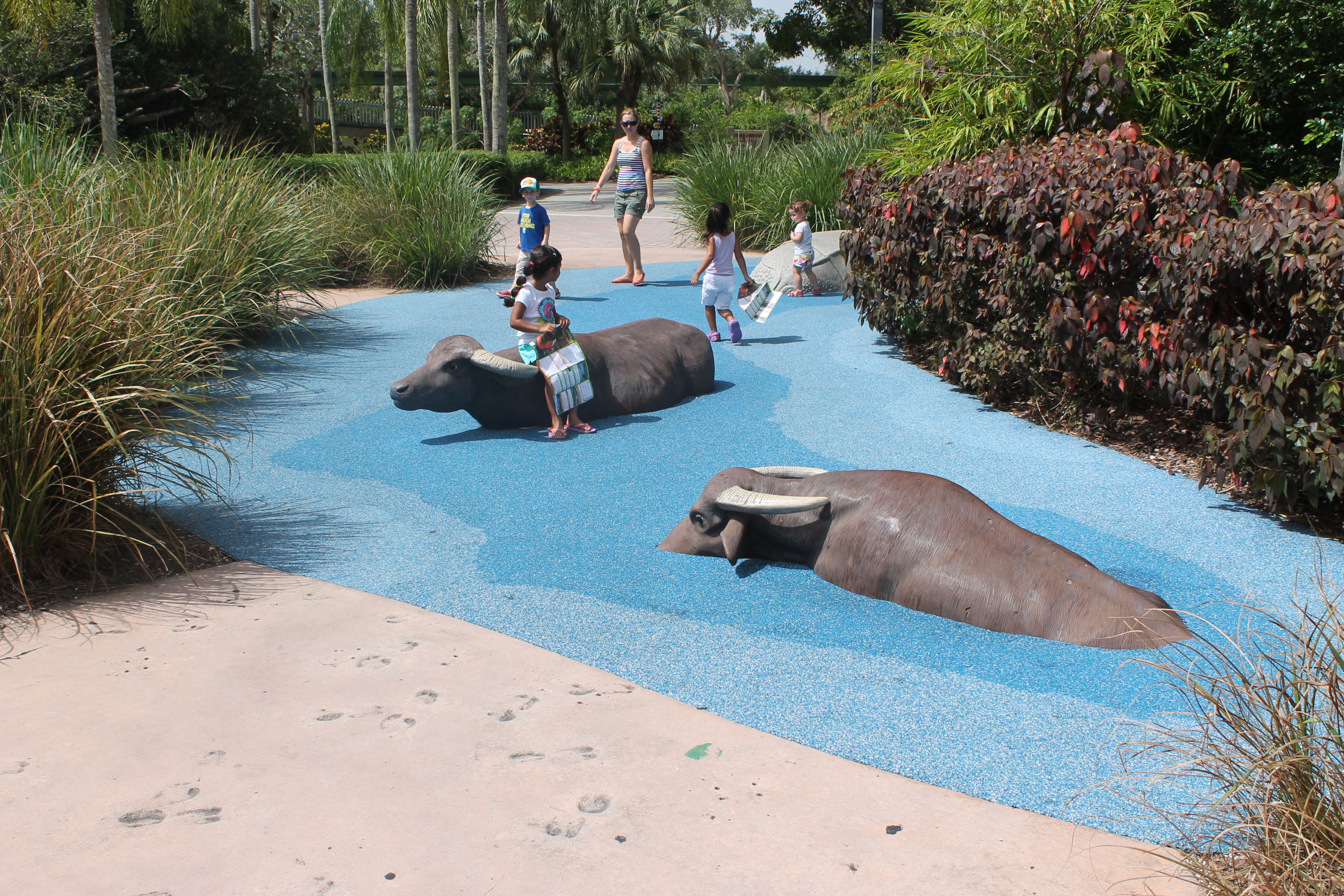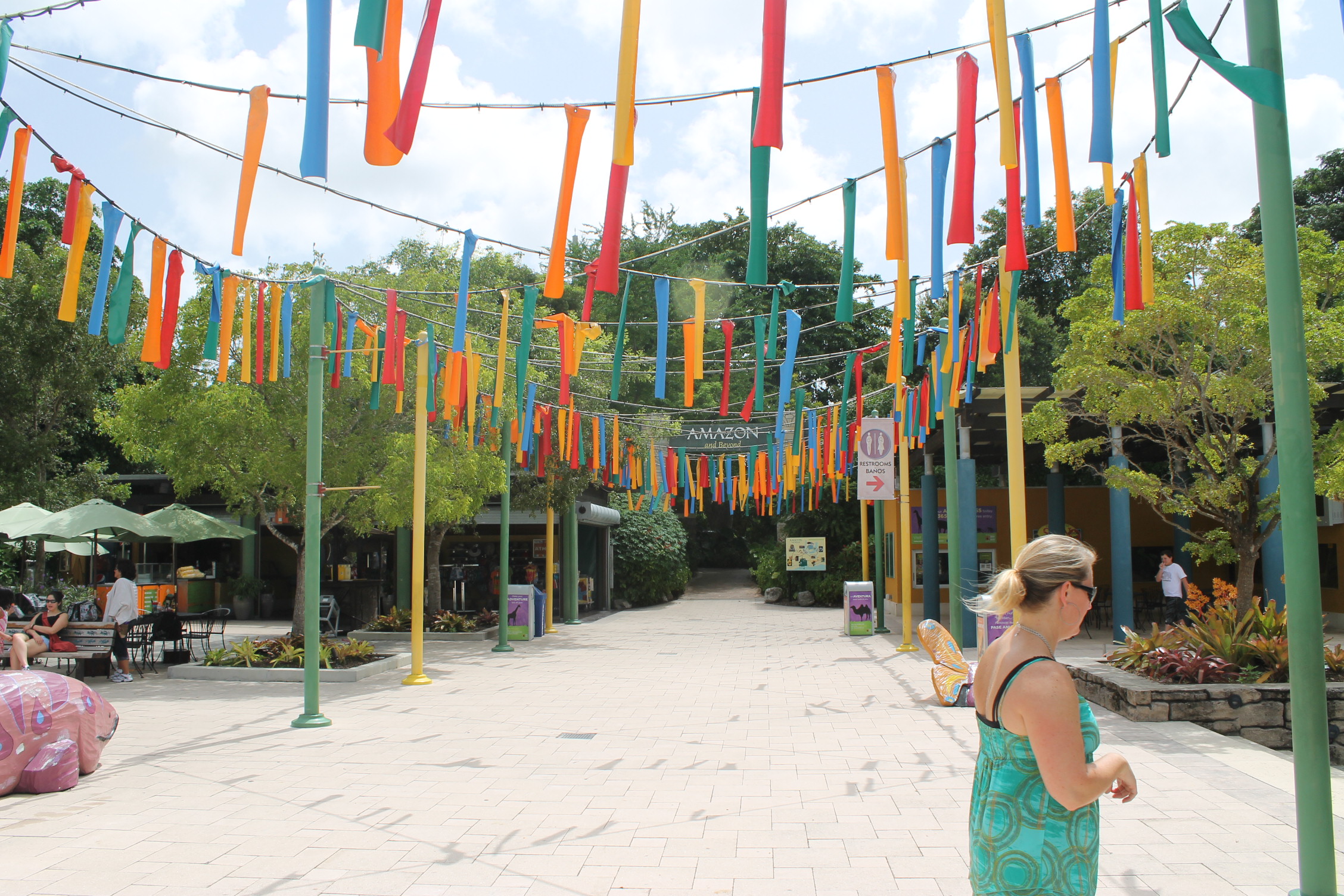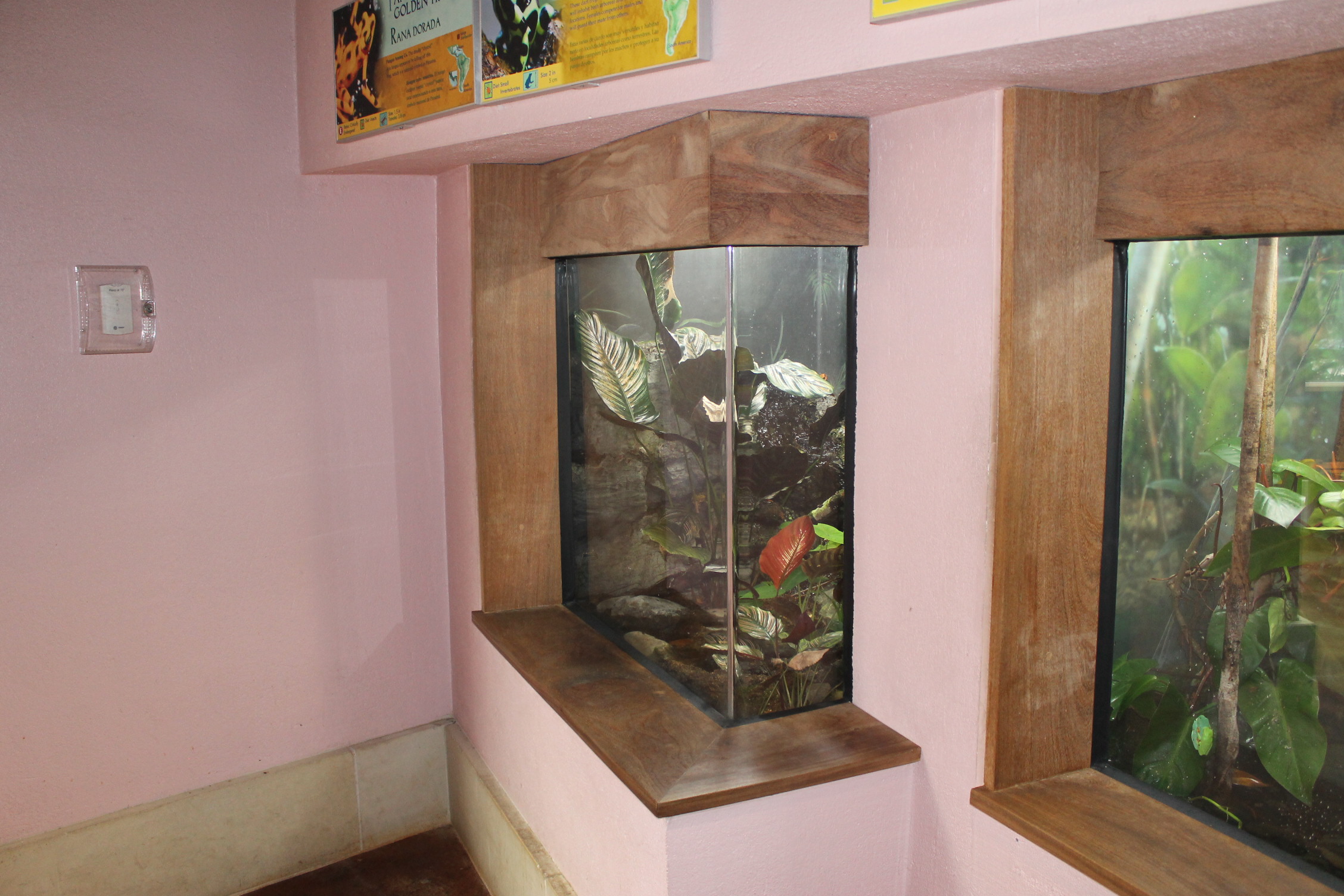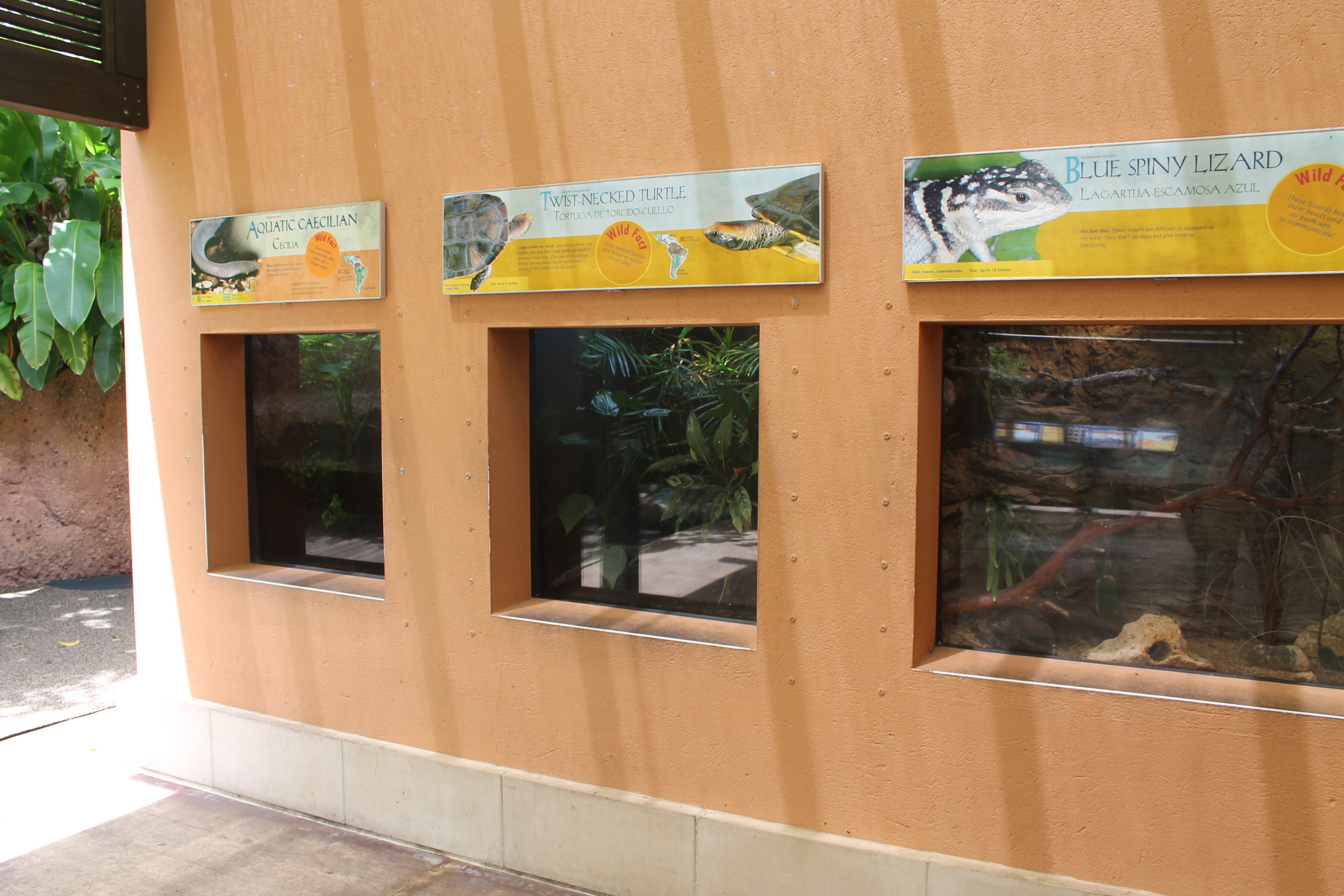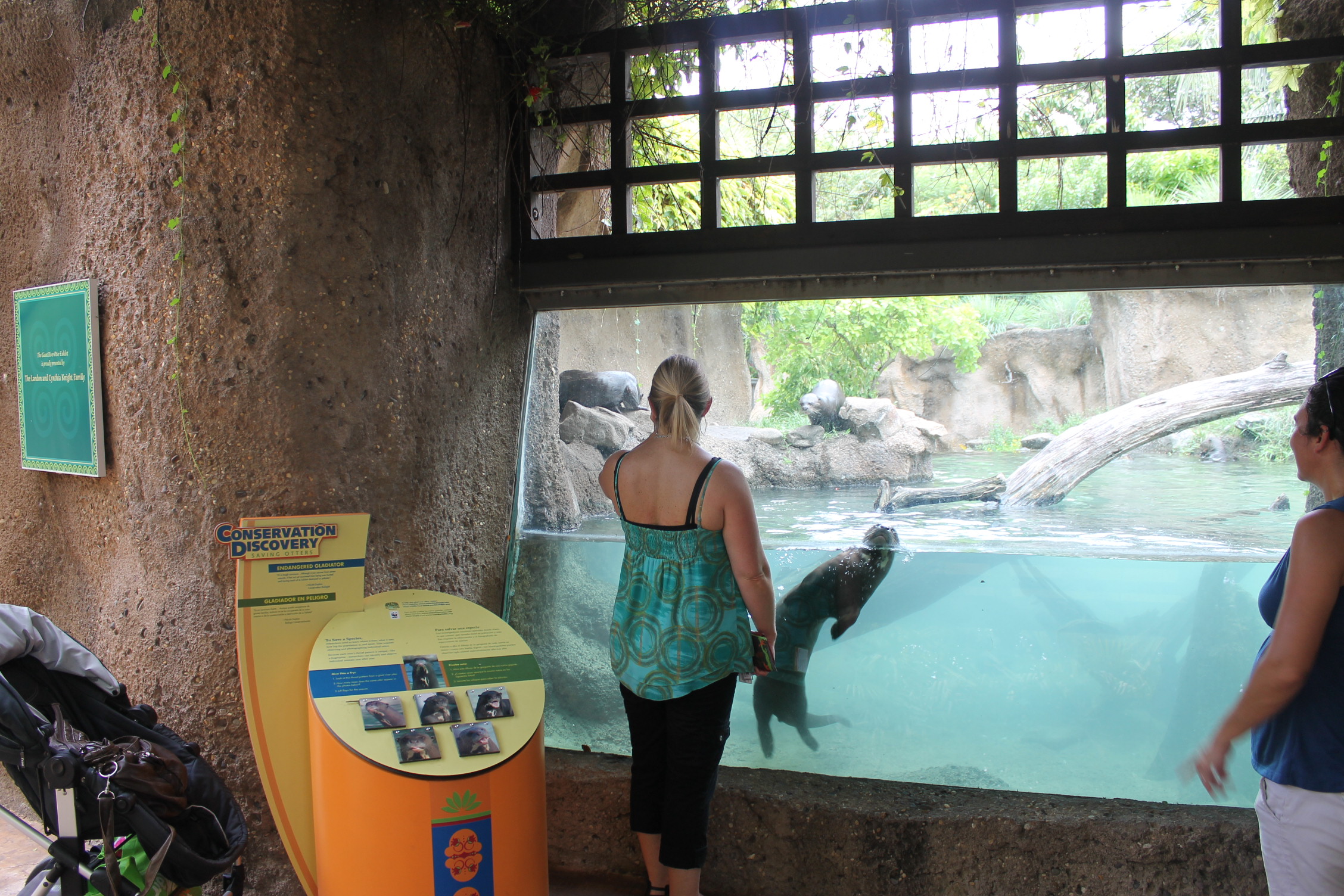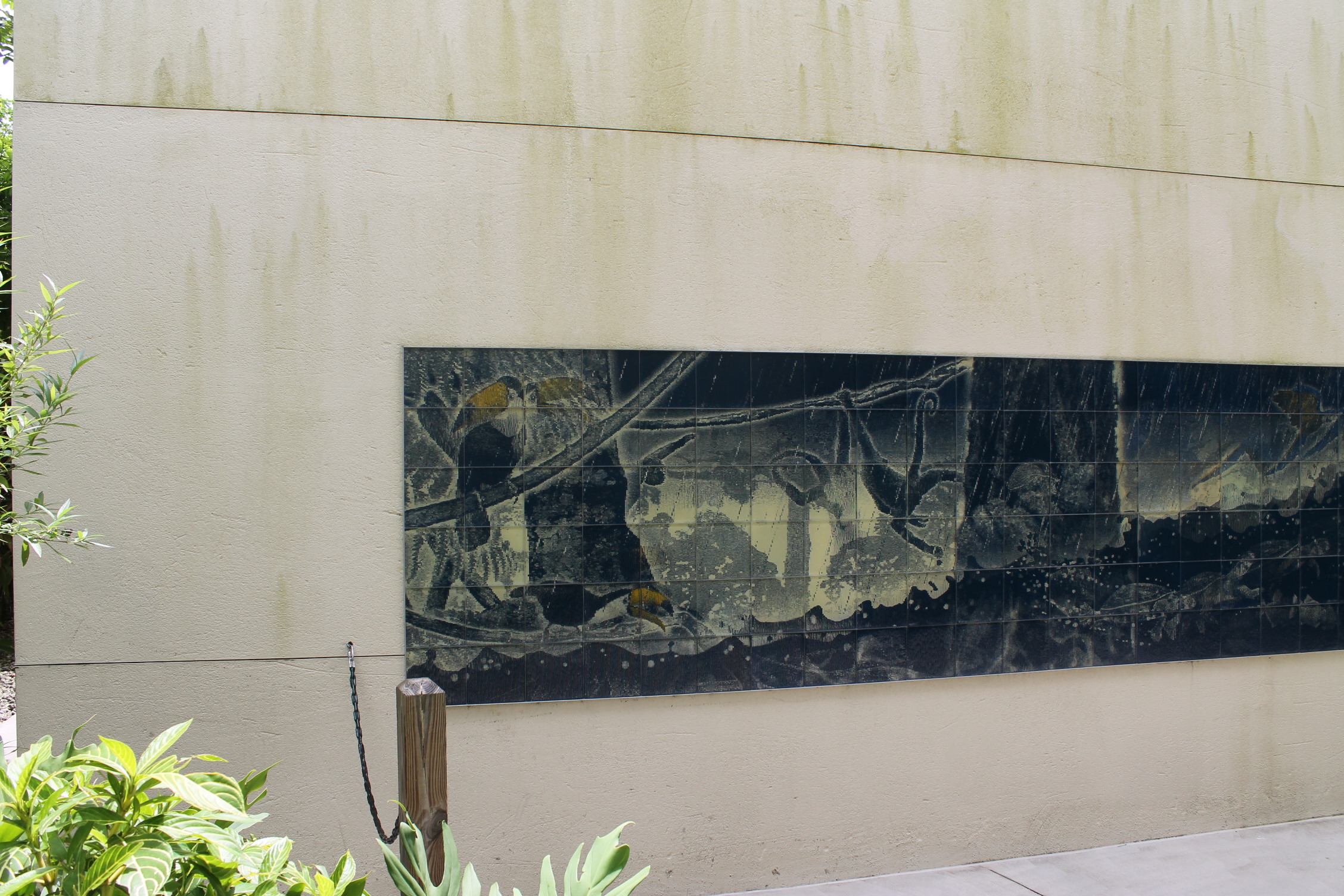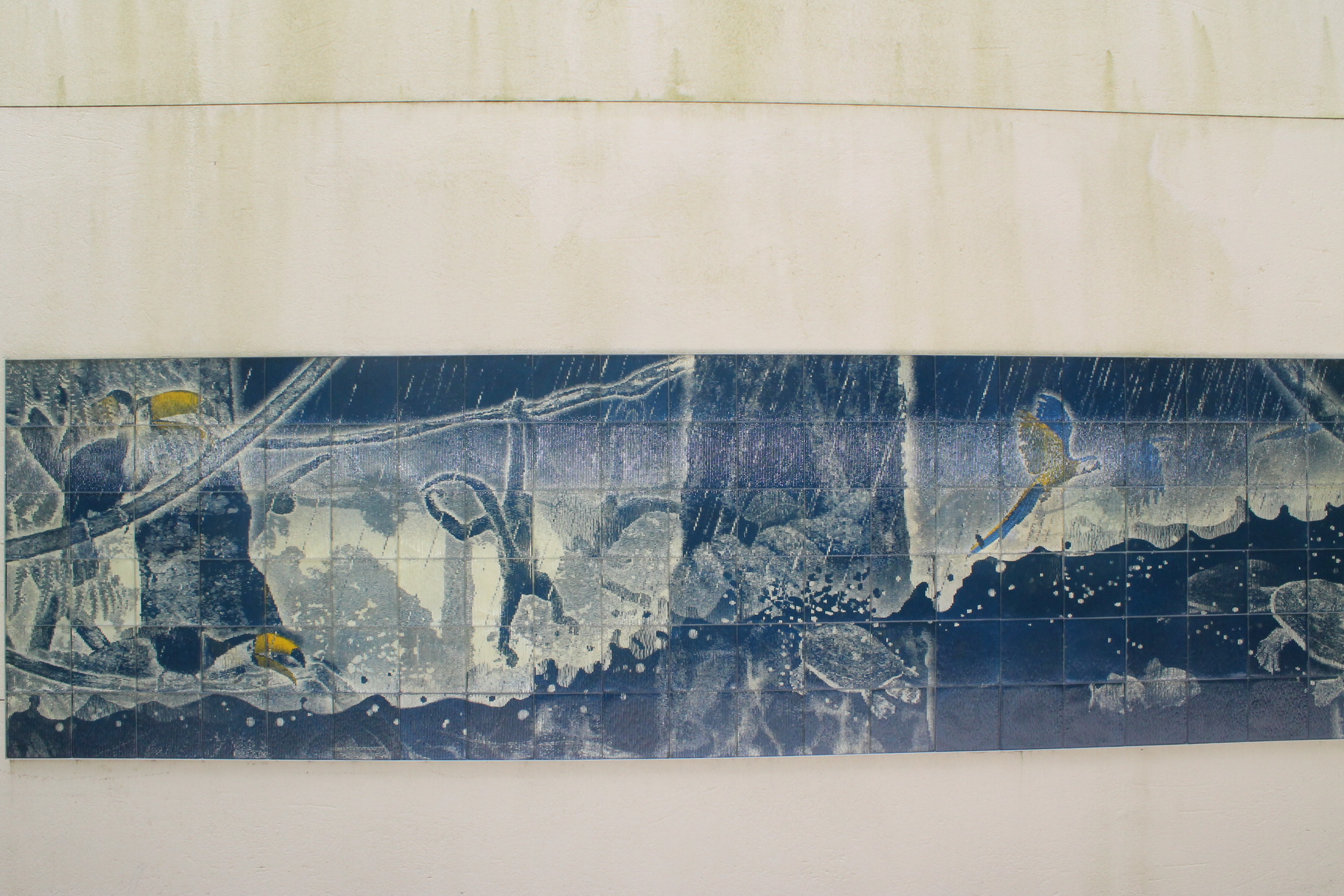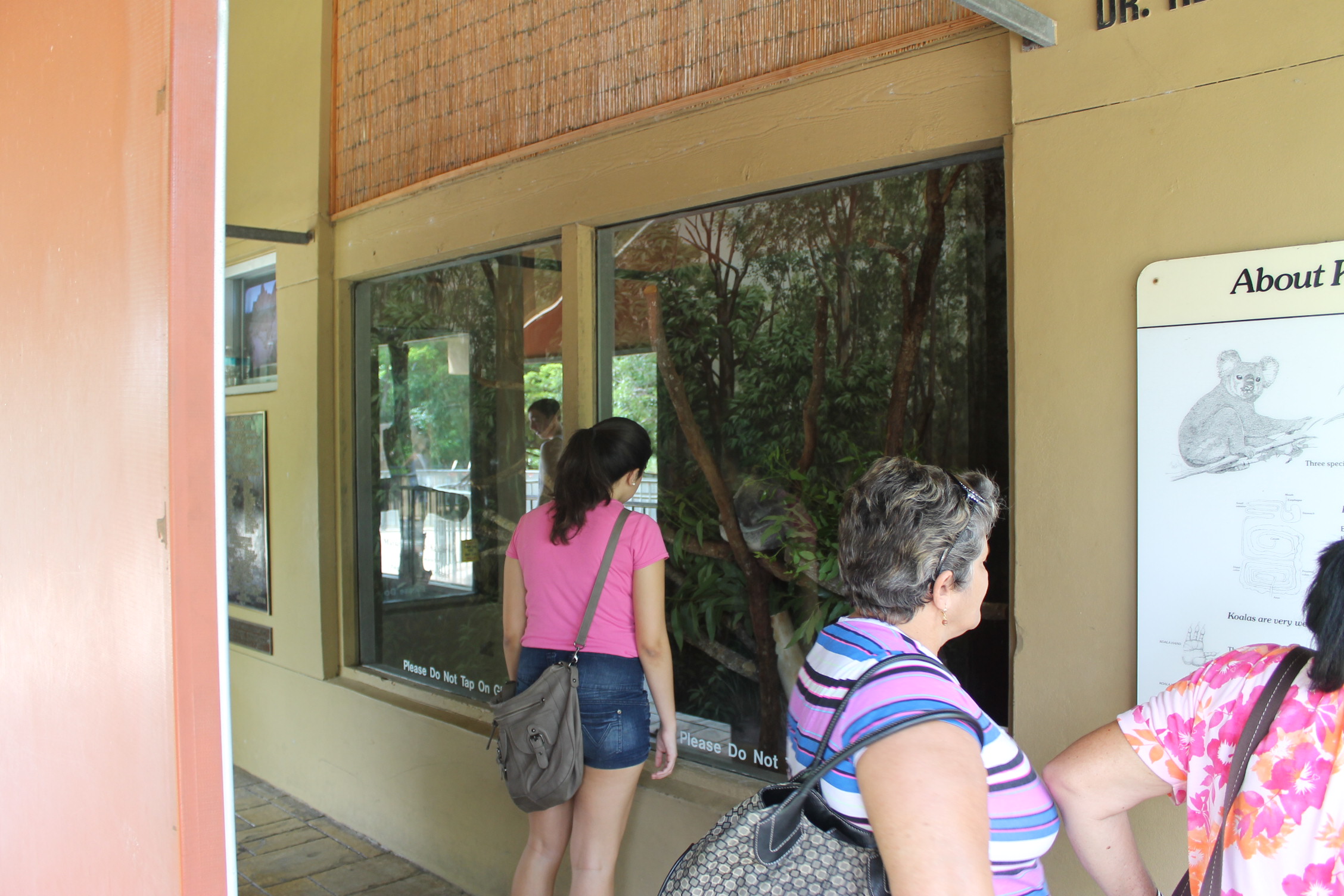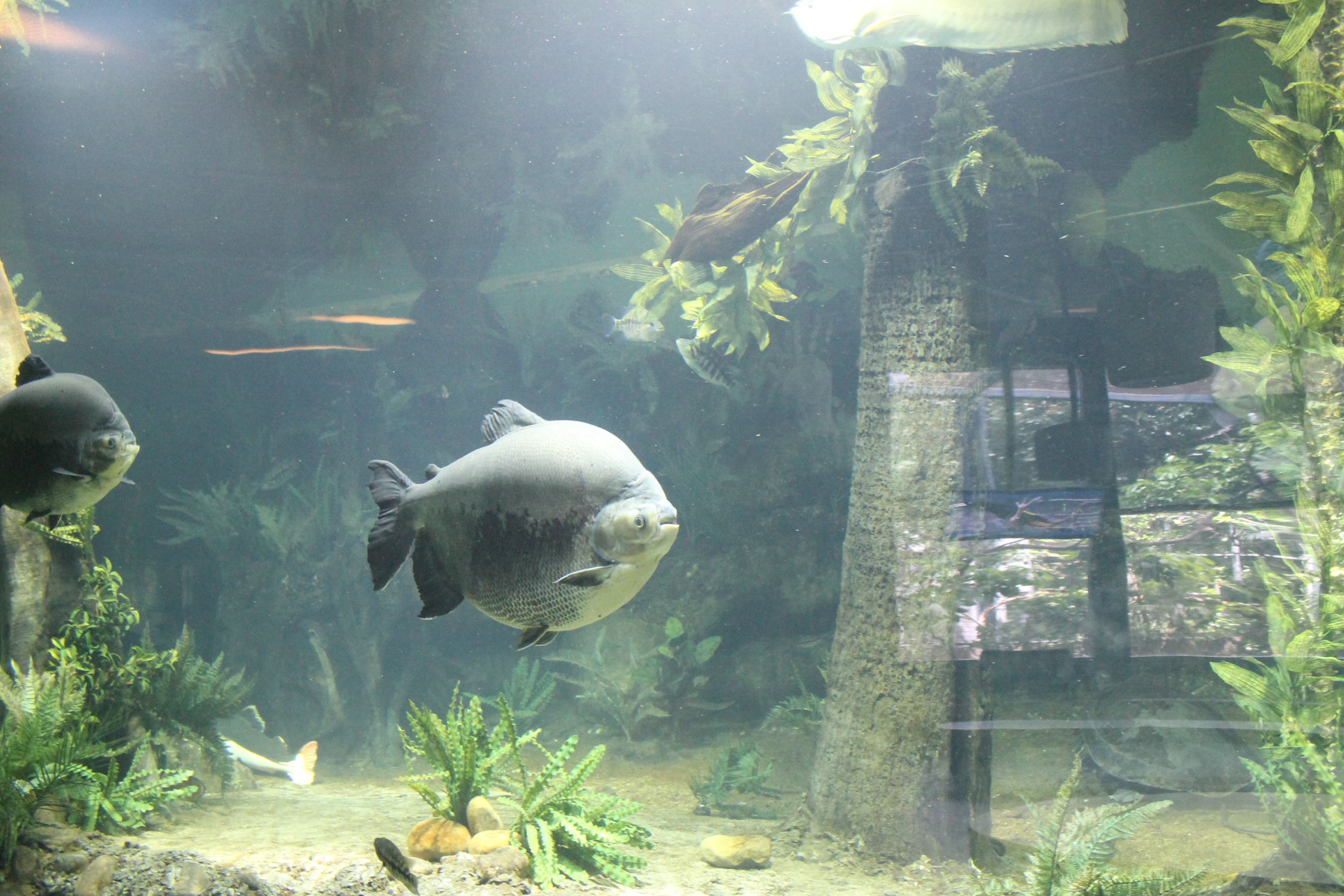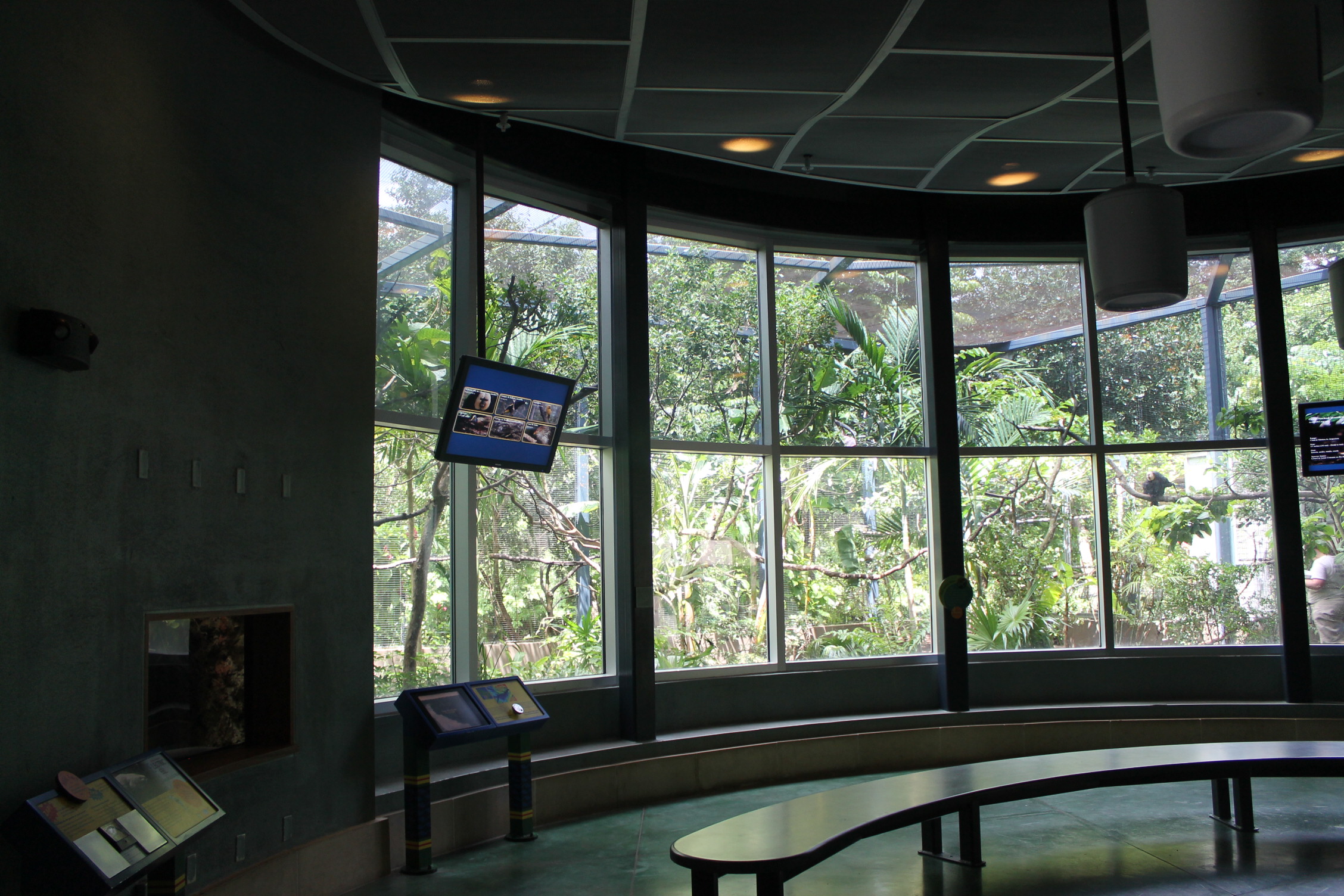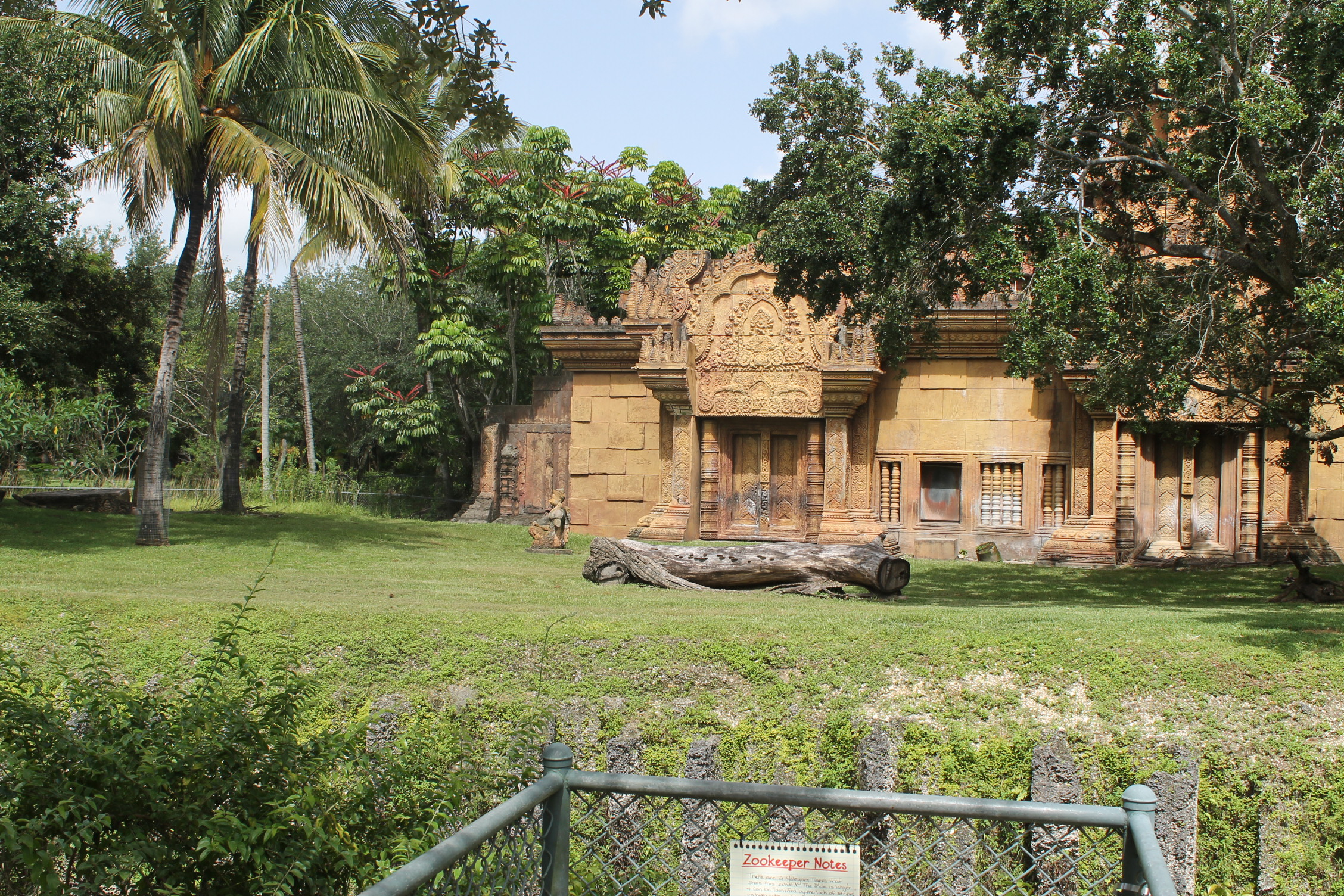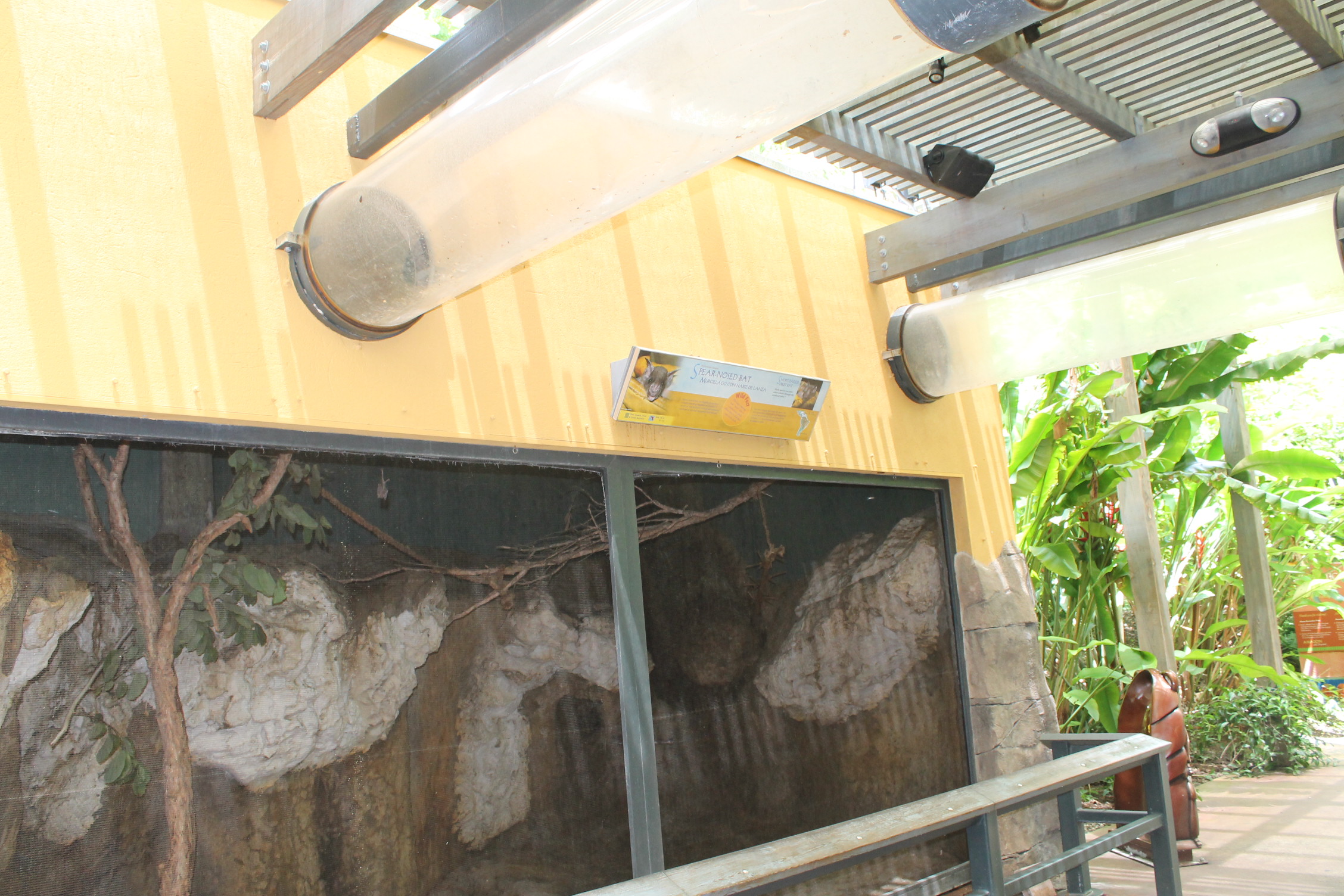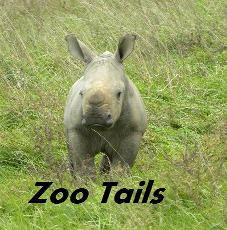 The Snow Leopard generally leads a solitary and snowy life among the rocks of the Himalayan mountains. Learn more about them by signing up to receive the PGAV Destinations Animal of the Month fact sheets by contacting me directly.
Check out a past fact sheet here.
The Snow Leopard generally leads a solitary and snowy life among the rocks of the Himalayan mountains. Learn more about them by signing up to receive the PGAV Destinations Animal of the Month fact sheets by contacting me directly.
Check out a past fact sheet here.
Giraffe Feeding Beneficial to Animals
 Recently, I was engaged in a friendly debate about the merits (or faults) of a giraffe feeding experience. One of the issues that came up was whether or not the experience negatively affected the animals. As it turns out, a student at my alma mater, Michigan State University, was wondering the very same thing.
His research, documented via poster for the AZA Conference Poster Session, indicates giraffe feeding programs act as a form of enrichment for the animals, and are therefore beneficial. His preliminary results follow:
Recently, I was engaged in a friendly debate about the merits (or faults) of a giraffe feeding experience. One of the issues that came up was whether or not the experience negatively affected the animals. As it turns out, a student at my alma mater, Michigan State University, was wondering the very same thing.
His research, documented via poster for the AZA Conference Poster Session, indicates giraffe feeding programs act as a form of enrichment for the animals, and are therefore beneficial. His preliminary results follow:
Inspiring Kids to Become Activists (AZA 2012, Day 3)
 After a wonderful Icebreaker on Monday night (Sept. 10) at the Arizona Science Center (where Dave and I survived a hurricane and a volcano eruption), the Tuesday morning general session officially kicked-off the conference. During this session, we were treated to a rousing presentation by Marc Kielburger, co-founder of Free the Children, an international human rights organization based in Canada.
Free the Children is an inspiring organization in its own right--empowering children to help other children across the globe. The organization was originally created by Marc's younger brother after he traveled to South Asia to investigate child labor--when he was 12! But, that's only part of why Marc was at AZA 2012.
After a wonderful Icebreaker on Monday night (Sept. 10) at the Arizona Science Center (where Dave and I survived a hurricane and a volcano eruption), the Tuesday morning general session officially kicked-off the conference. During this session, we were treated to a rousing presentation by Marc Kielburger, co-founder of Free the Children, an international human rights organization based in Canada.
Free the Children is an inspiring organization in its own right--empowering children to help other children across the globe. The organization was originally created by Marc's younger brother after he traveled to South Asia to investigate child labor--when he was 12! But, that's only part of why Marc was at AZA 2012.
Free the Children and sister organization, Me to We, have figured out how to motivate children, especially teenagers, to not only become interested in world issues, but to become activists for their favorite causes. A challenge we in the zoo and aquarium industry are constantly facing (with kids, sure, but also with adults!).
Marc described their philosophy with 5 key bullet points.
1. Make it Cool to Care
Although Marc prefaced this by pointing out that children today are much different than those even 10 years ago--when apathy was the IN thing (Did you see the 21 Jump Street movie this summer? Yeah, that's what he's talking about.)--kids still want to feel like they are part of the in-crowd. Like they sit at the cool table in the cafeteria. And they feel this way when all their friends are doing something, and even more so, when that something is endorsed by all the It celebrities. Yes, we're talking Justin Bieber, Demi Lovato, Magic Johnson, Jennifer Hudson, and--always popular with the kiddies--Mikhail Gorbachev, among many, many others. Marc's organizations make it cool by putting on exuberant, over-the-top, arena-sized kid-travaganzas, called 'We Days', featuring inspiring talks and rocking musical performances that can only be attended by children who meet the activism and volunteer eligibility requirements. These events are experiences that kids look forward to and work hard for. Things kids brag about attending. Things the cool kids do-- in other words, 'incentives.'
2. Gift + Issue = Change
Everyone has something they are good at, whether its baking cupcakes, drawing unicorns, or selling tires. Identifying your strength is the first step to becoming an activist. Getting kids involved means helping them identify their own gift. It also means helping them understand how they can apply their gift to support an issue that is dear to them. Once that connection is realized, anyone, including children, can confidently take action to initiate change. And according to Kielburger, activism can be as small as a bake sale.
3. Call a Minga
Kielburger explained a ‘minga’ as a coming together of many to the benefit of all. It is a Chilean word with, ironically, no direct equivalent in the English language. He described the scene when he first experienced a minga—after the village elder woman yelled the word across a canyon in the Andes and a congregation of strangers from the surrounding hills showed up to help out—without explanation, without question. This feeling of support, of community is something that most of us long for—including our kids. This generation, more so than any in recent memory, are aching to be a part of something larger than themselves. To do for others in need, even as many themselves are struggling.
4. Changing Perspectives
Remember the saying, “If you could walk a mile in their shoes”? First-hand experience is the absolute best way to understand an issue. In order to inspire, to motivate, kids need to participate, to experience, to see with their own eyes. Me to We provides these experiences for young people, bringing them to remote villages in need of help--taking children to Africa to build schoolhouses, or carry jugs of water two miles each way so mothers can spend a day with their children. Authentic, in-the-field experiences that really enforce what they've learned at home. Kielburger believes these are life-altering, formative experiences that create fundamental and lifelong activists.
5. Keep it Social
This one’s simple: keep the activism where the kids are…online. Kielburger stressed that kids don’t read email anymore. They live on Facebook, on Twitter, on Tumblr. If you want to communicate with them, utilize their favorite forms, and reach them in their own language.
 So the question is now…how do we translate these bullet points into campaigns that zoos and aquariums can use? Can we link these to the physical design of a place, or are we moving more into a place where educational outreach and programming is the only means to create activists? Personally, I think the physical zoo experience is the foundation for creating activists. The first step, the platform from which we jump off—not only with kids but with adults too. Get their attention, provide the base info, then provide a means to take action. The zoo itself is the means to bring issues to the table. To make people aware. Encouraging them to take action will require more than a physical exhibit. It will require partnerships and programming. It also requires taking chances and getting creative.
So the question is now…how do we translate these bullet points into campaigns that zoos and aquariums can use? Can we link these to the physical design of a place, or are we moving more into a place where educational outreach and programming is the only means to create activists? Personally, I think the physical zoo experience is the foundation for creating activists. The first step, the platform from which we jump off—not only with kids but with adults too. Get their attention, provide the base info, then provide a means to take action. The zoo itself is the means to bring issues to the table. To make people aware. Encouraging them to take action will require more than a physical exhibit. It will require partnerships and programming. It also requires taking chances and getting creative.
What do you think?
"Safari Africa!" Revealed at Columbus Zoo
 Today, Columbus Zoo and Aquarium officially broke ground on the 40+ acre, $30 million Safari Africa! project. Director Emeritus, Jack Hanna, acting Director, Tom Stalf, and a host of other stakeholders dug into the open fields once used for soybean farming located just north of the current zoo property.
"We had a beautiful sunny morning, the photos outlining the project...were outstanding and were placed around the tent. We had three huge metal giraffes from our gift shop which welcomed our guests. Our friends
Today, Columbus Zoo and Aquarium officially broke ground on the 40+ acre, $30 million Safari Africa! project. Director Emeritus, Jack Hanna, acting Director, Tom Stalf, and a host of other stakeholders dug into the open fields once used for soybean farming located just north of the current zoo property.
"We had a beautiful sunny morning, the photos outlining the project...were outstanding and were placed around the tent. We had three huge metal giraffes from our gift shop which welcomed our guests. Our friends  from the promotions department joined us with Trout the Penguin , Lucky the Leopard Turtle, a Wild Boar and a Porcepine. Jack, Tom and other dignitaries, armed with their “gold” shovels autographed by Jack, took the first shovels of dirt from the site," stated Daryl Halvacs from the Zoo's Planning and Design department.
from the promotions department joined us with Trout the Penguin , Lucky the Leopard Turtle, a Wild Boar and a Porcepine. Jack, Tom and other dignitaries, armed with their “gold” shovels autographed by Jack, took the first shovels of dirt from the site," stated Daryl Halvacs from the Zoo's Planning and Design department.
Along with the ceremony, the Zoo published a series of conceptual renderings prepared by project designer, PGAV. As an insider, I'll share a tiny secret: these renderings are just a taste of the whole experience so prepare to be surprised when you visit after opening May 2014!
St. Louis Zoo's "Sea Lion Sound"
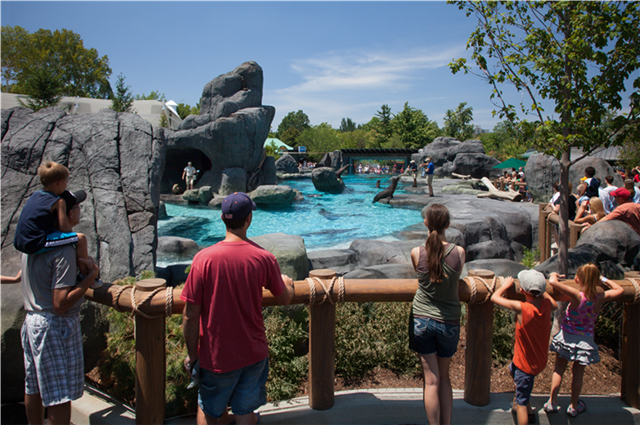 This summer was an exciting one for the sea lions at St. Louis Zoo! On June 30, 2012, a new, state-of-the-art PGAV-designed exhibit and amphitheater was officially opened after years of design and construction--on the very spot of their old exhibit. Located in what is referred to as the 'Historic Basin', Sea Lion Sound anchors the core of the zoo, right at the major crossroads for north-south circulation and the eastern spur. The exhibit was the first to be completed from the most recent master plan also completed by PGAV.
Below is a fly-through video of the Sea Lion Sound original design.
This summer was an exciting one for the sea lions at St. Louis Zoo! On June 30, 2012, a new, state-of-the-art PGAV-designed exhibit and amphitheater was officially opened after years of design and construction--on the very spot of their old exhibit. Located in what is referred to as the 'Historic Basin', Sea Lion Sound anchors the core of the zoo, right at the major crossroads for north-south circulation and the eastern spur. The exhibit was the first to be completed from the most recent master plan also completed by PGAV.
Below is a fly-through video of the Sea Lion Sound original design.
[youtube http://www.youtube.com/watch?v=zS6wrJnSPas]
The $18 million project features a large exhibit with both underwater and overwater views, a large open-air, shaded amphitheater and show pool (complete with sea lion slide!), holding facilities and underground LSS yard. Exhibit viewing is completely unique to sea lion exhibits in the United States, and features a 23 foot tall flat panel as well as the crown jewel, a 35 foot long acrylic tunnel. The show pool is also fronted in acrylic to allow both underwater and overwater enjoyment.
 Recently, I was able to interview a PGAV staffer who was instrumental in the creation of Sea Lion Sound, Rosey Masek-Block, about the specifics of the project.
Recently, I was able to interview a PGAV staffer who was instrumental in the creation of Sea Lion Sound, Rosey Masek-Block, about the specifics of the project.
DZ: What was your official role in the project, Rosey?
RMB: Construction Administrator. I attended weekly meetings with the CM [Construction Manager] and GC [General Contractor] to address any questions or concerns that had come up.
DZ: What was the most challenging aspect of your job?
RMB: Providing answers quickly when unforeseen conditions arose. A lot of times there would existing site conditions, weather conditions, or delayed deliveries that would affect what was going on. Any long delay in an answer would delay the construction.
 DZ: What was the most satisfying?
DZ: What was the most satisfying?
RMB: Seeing the Sea Lions happily swimming and performing. Also attending the shows incognito and having the public sit by you and express how excited they were that THEIR zoo has something this new, beautiful, and exciting.
DZ: That must be so amazing! Now, let's get into some specifics. How big is the total project area?
RMB: The total construction site is about 1.5 ares.
 DZ: How many animals will be living here, and what species are they?
DZ: How many animals will be living here, and what species are they?
RMB: Right now there are 10 California Sea Lions and 1 Harbor Seal. 3 of the Sea Lions were born at the STL Zoo. It was designed to accommodate 10-15 sea lions. {Steve Bircher, curator, says the zoo may adopt or breed sea lions in the future, but has no plans to take in any additional seals.}
 DZ: How many gallons are in the total system? How many per pool?
DZ: How many gallons are in the total system? How many per pool?
RMB: The entire system is roughly 250,000 gallons. All the pools are linked together, but roughly the main exhibit pool makes up about 190,000.
DZ: How big is the Exhibit, in area?
RMB: The Exhibit itself is about 11,000 square feet.
DZ: How many seats in theater?
RMB: There are approximately 830 seats, give or take a few, as it is bench style seating.
DZ: What were the design goals for the project?
RMB: I wasn’t on the design team for this [project] in the beginning, [but according to them] there were a few main things we were hoping to achieve: To provide the feel of the Pacific northwest in the rockwork, buildings, and surroundings (mimicking the natural habitat). To keep the profile of the exhibit as low as possible--we still wanted to preserve as much of the views looking up/down historic hill as possible. To provide an up-to-date filtering system to reduce water waste, and to provide an entertaining and playful environment for the animals and the people. The tunnel needed to be low enough to provide enough space for animals to feel comfortable on both sides of the exhibit. After all, they sometimes express just as much curiosity looking at the people as the people do looking at them.
DZ: That's absolutely true. Sometimes we underestimate the power of the visitor as a form of animal enrichment! Is there a conservation message? How is it presented (show or exhibit?)?
RMB: Water Conservation is probably the biggest. Originally the old exhibit was a dump and fill pool. The new system filters the water rather than replacing it. {Dr. Jeffrey Bonner, Zoo President, recently stated that since the species of sea lions and seals living in this exhibit are not endangered, he believes this exhibit to be more about educating guests about the animals rather than about conservation.}
 DZ: What were the main components to the design…theater, exhibit, holding, what else?
DZ: What were the main components to the design…theater, exhibit, holding, what else?
RMB: The Life Support Systems Basement. Most people can’t tell that under the little holding buildings is a 2 story basement containing all the equipment needed to keep the exhibit healthy and beautiful. Also providing shade for the public as well as the animals was a huge part of the project.
DZ: What other animal projects have you worked on? Do you think of yourself as a zoological designer or just an architect that happens to have worked on animal projects?
RMB: I’ve been a part of STL Zoo Bear Design and the design team for a project at Columbus Zoo. Right now I would consider myself an architect working TOWARDS becoming a zoological designer.
 DZ: What a great way to think about it! You've certainly gotten some significant experiences under your belt!
DZ: What a great way to think about it! You've certainly gotten some significant experiences under your belt!
RMB: I enjoyed being part of the process – I feel really proud when I take people to my local zoo and can say I was part of helping make it great.
 Thanks for your time and dedication, Rosey! Congratulations everyone who contributed to this wonderful project.
Thanks for your time and dedication, Rosey! Congratulations everyone who contributed to this wonderful project.
August Animal of the Month: Manatee
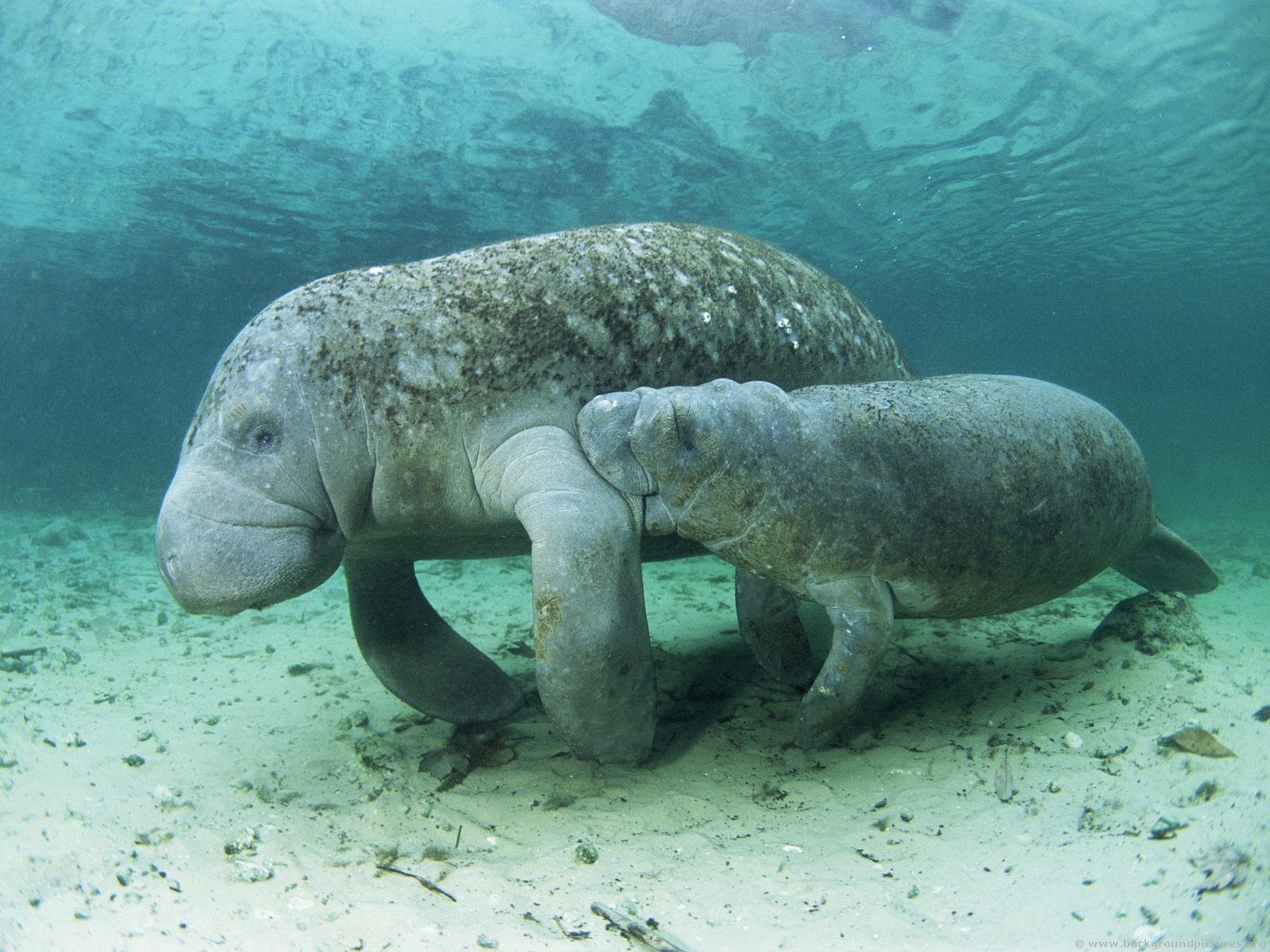 Oh, the lovely sea cow. Once believed to call to sailors, as would a mermaid or, say, a siren, this slow moving, blubbery beauty of the order Sirenia was our focus in August. A favored friend of Florida, the West Indian Manatee is now endangered and relatively rare in captivity. Learn all about this sweet creature here.
Oh, the lovely sea cow. Once believed to call to sailors, as would a mermaid or, say, a siren, this slow moving, blubbery beauty of the order Sirenia was our focus in August. A favored friend of Florida, the West Indian Manatee is now endangered and relatively rare in captivity. Learn all about this sweet creature here.
ATTENTION: This will be the last Animal of the Month that will be posted to the blog. In the future, I will send out the fact sheet via email. If you are interested in receiving them, please contact me.
Glacier Run Wins TOP HONORS!
 You may have already heard the wonderful news, but if not, Designing Zoos is proud to announce that Louisville Zoo's PGAV-designed Glacier Run received the Top Honors award in Exhibit Design on Wednesday, Sept. 12 at the annual AZA Conference in Phoenix.
As mentioned before, this exhibit is near and dear to my heart as it is the first exhibit in which I was deeply involved. I was even a part of the interview team--and as such, did some on-site visitor research at Detroit Zoo and at Louisville prior to meeting the zoo for the first time!
You may have already heard the wonderful news, but if not, Designing Zoos is proud to announce that Louisville Zoo's PGAV-designed Glacier Run received the Top Honors award in Exhibit Design on Wednesday, Sept. 12 at the annual AZA Conference in Phoenix.
As mentioned before, this exhibit is near and dear to my heart as it is the first exhibit in which I was deeply involved. I was even a part of the interview team--and as such, did some on-site visitor research at Detroit Zoo and at Louisville prior to meeting the zoo for the first time!
We're so proud of the innovation and teamwork required to concept, design, construct, and maintain the guest and animal experience, and inspired by the dedication and insight of the Louisville Zoo staff. It truly is a wonderful exhibit!
If you haven't visited, get yourself there! And be sure to share photos with us!
AZA 2012: Day 1--Why Zoos and Aquariums Matter
Before the Icebreaker antics at the Science Center, before the Keynote address, before the Exhibit Hall opens, and before most attendees even arrive, the AZA Conference offered an all-day workshop focused on perceptions of zoos and aquariums. Led by the upbeat, funny and fabulous ladies of various zoo and aquarium education departments (Vicki, Danni, and Jill), the eight hour workshop dove into two large visitor research projects commissioned by the AZA several years ago. After multiple table shuffles during workshop activities, participants meet and engaged with each other exposing everyone to multiple points-of-view of the zoo industry (and, POVs of non-industry experts from the likes of NSF, Petsmart, and California Science Center, to name a few).
 The basic premise of the workshop was simple: We cannot appropriately address the needs of our stakeholders & visitors (experientially, educationally, emotionally, etc) without having an accurate profile of their perceptions.
The basic premise of the workshop was simple: We cannot appropriately address the needs of our stakeholders & visitors (experientially, educationally, emotionally, etc) without having an accurate profile of their perceptions.
First, we tackled stakeholders. We discussed visitors, educators, volunteers, media, spiritual leaders, politicians, and field biologists. The most intriguing results are below:
VISITORS: Guests see zoos and aquariums as experts on animals, but have not made the connection to their expertise in science or conservation in general. For example, they will call the zoo for information about the cougar spotted in the hills behind their house, but will not seek out the zoo for information about rain forest depletion.
EDUCATORS: Teachers value zoos as an educational experiences, but the vast majority do not understand how to use the zoo in their own classroom.
POLITICIANS: Zoos and aquariums are a trusted educational resource, but politicians by and large do not have an understanding as to what is being taught.
MEDIA: News outlets generally turn to zoos for information about animals and about human-animal interactions. For example, media set up camp at Columbus Zoo during the sad Zanesville events, but rarely turn up to cover successes in conservation such as critical births or releases of rehabbed animals.
VOLUNTEERS: Although they may have joined the zoo volunteer program initially to help with animals, volunteers understand their role to be critical in the education of children.
SPIRITUAL LEADERS: Overall, religious leaders hold a surprisingly positive attitude toward zoos and aquariums lauding institutions for their educational value, particularly for children. Many participants cited examples of religious groups regularly visiting the zoo, using their facility as a place of worship, and utilizing educational programs (some with one caveat: Don't use the "E" word...evolution).
FIELD BIOLOGISTS: Generally, scientists understand the value of the opportunity to teach visitors about animals and their plight in the wild. However, most have some level of distrust in the institutions, due to the perceived lack of serious research occurring at zoos as well as disappointment in the level of information being disseminated to visitors.
Finally, we discussed the visitor more deeply. As shown time and again, the prime visitor segment is family. Beyond that, visitors can be broken down into categories based on motivation.
EXPLORERS: Visitors whose primary drive is curiosity and the desire to dig deeper. This segment generally defines the majority of zoo visitors.
PROFESSIONALS / HOBBYISTS: These visitors are those with specialized knowledge who utilize the zoo either as a case study or as a place to practice their field. Think zoo designers visiting zoos or photographers photographing cute otters.
FACILITATORS: These visitors are motivated by the desire to fulfill the needs of others. Mommies (and stay-at-home dads) are a great example of facilitators.
EXPERIENCE SEEKERS: Think of these folks as hoarders. They have a checklist of places and experiences, and visit in order to check each one off their list. They seek the biggest, best and most popular. Theme park enthusiasts are typical experience seekers.
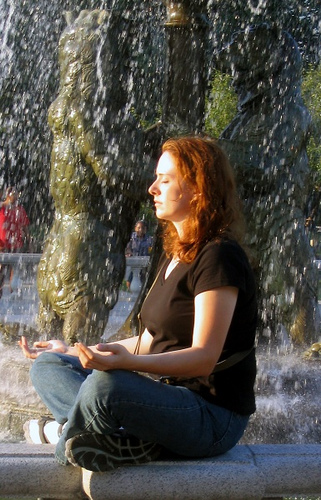 SPIRITUAL PILGRIMS: These visitors have a special connection to nature and appreciate the wildlife for their beauty and nature as a place to calm, meditate and recharge.
SPIRITUAL PILGRIMS: These visitors have a special connection to nature and appreciate the wildlife for their beauty and nature as a place to calm, meditate and recharge.
As designers, we must consider each of these visitor types and provide at least one experience for each. An experience too heavy in one or another of these types will be unsuccessful, especially in relation to the institution in which you work. Every zoo and aquarium's visitor profile is slightly different, and before design begins, a visitor evaluation may be in order. The workshop introduced several evaluation tools and provided templates for use.
At the end of the day, I was overwhelmed and tired. But all in all, it was useful and applicable to designers--even if you have already read the studies. My one complaint is the title of the workshop--I don't believe we really discussed 'why zoos and aquariums matter' at all. I would've liked to hear more about how institutions communicate the answer to this question to their stakeholders. So far, we've only just asked the question.
DZ visits the Lemur Conservation Reserve
After a quick email exchange and phone conversation with Patti Walsh, Director of Research and Operations at the Lemur Conservation Foundation, a visit to their Lemur Reserve was in order. Located just outside Myakka City, FL, a town with little more than a farm store and a yellow light, the Reserve is over 100 rural acres of mixed pine and oak forest.
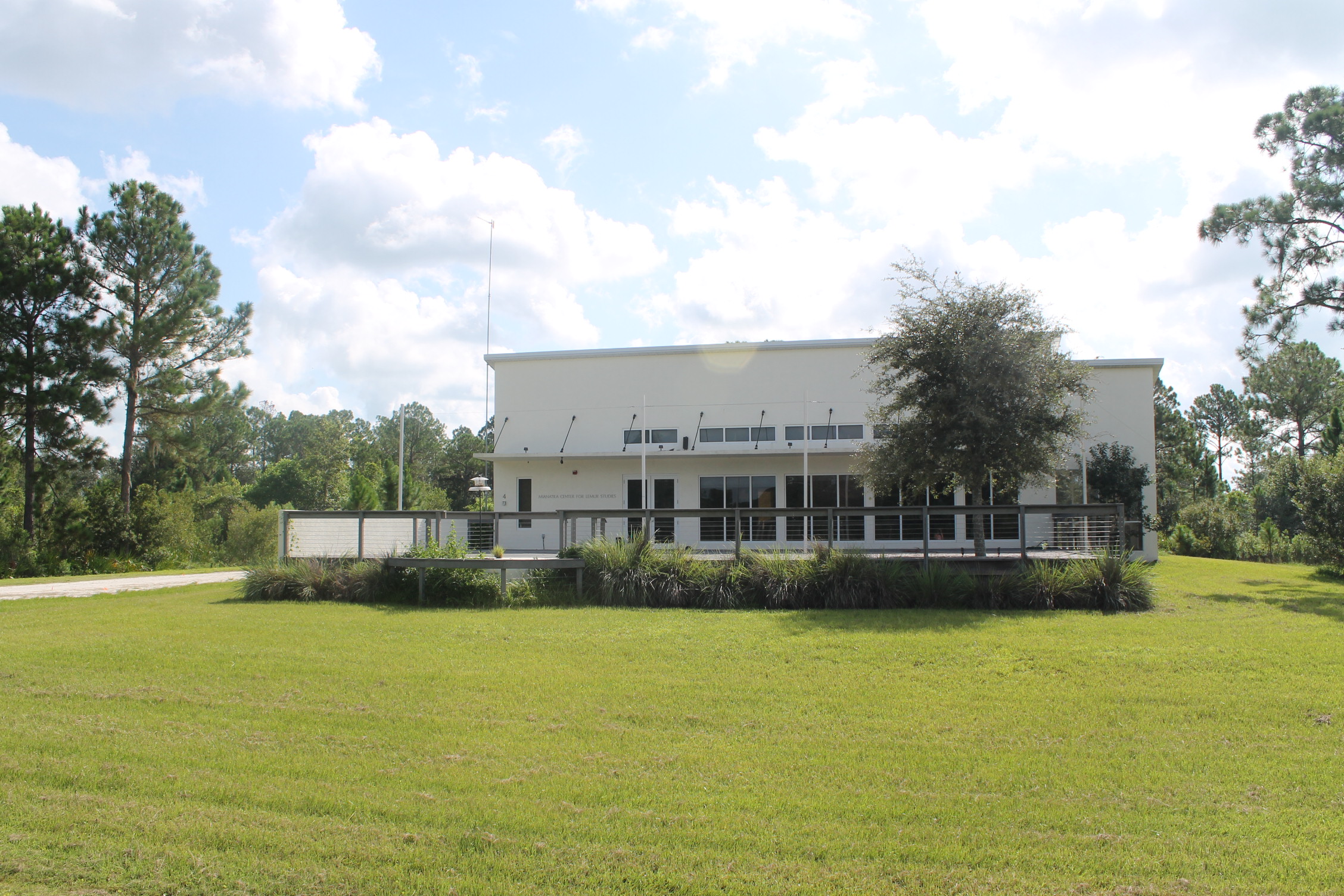
The Foundations’ 44 lemurs have free-range within two fenced-in forested yards, 10 and 13 acres each. Compatible breeding groups are rotated between these two yards and holding facilities near the yards. The holding facilities have both indoor stalls (of various size, but averaging 8’ x 8’) immediately adjacent to outdoor, fully enclosed yards. These yards are approximately 20’ x 10’ x 8’ tall, and are elegantly appointed with all manner of lemur fun, playtime equipment.
Within each large forested yard, lemurs have the option to hang out in a holding facility featuring a geodesic dome which provides respite from the weather. The domes are made from Styrofoam, covered in plaster, and offer insulating qualities in both the heat of summer in central Florida and the chilly temperatures that sometimes occur during winter. The domes are located between two elevated outdoor stalls, and allow indoor transfer between the two outdoor yards for maximum flexibility and in case of emergency.
Currently, the Reserve features a small on-site clinic space—really little more than a room with veterinary supplies, and each holding building has its own small kitchen space. The 13 acre yard holding building’s kitchen is slightly larger allowing for the bulk of food storage, but with fresh produce donations occurring twice weekly, no large cooler space is required.
The Reserve was opened in 2000 with 32 lemurs and continues to grow with successful breeding on-site. The lemurs are often lent to other institutions for breeding as directed by the SSP. Long-term plans include the addition of another forest yard but is limited by both funding and growth of currently scrubby shrubs and seedlings. In the short-term, the Foundation is looking forward to enlarging the clinic space to enable more procedures to occur on-site, rather than transporting, as they do now, to a local veterinarian, nearly 45 minutes away.
Ultimately, the goal of the Reserve is to return lemurs to the wild, but for now, it is used as a breeding facility and base for research. The lemurs here are interested in people, and several came from their patrols in the forest to check me out from their perches high in the trees. Those housed in the holding facilities ran to say hello. So amazing!
If I could suggest anything for this special place, it would be to create an experience that the public at large could enjoy—right now, only researchers and special guests are allowed. This would represent one version of the future of zoos as visualized by some designers.
On a Personal Note: Get Your Ugly Mug into My Kitchen...
You should know this about me: I love tea. Green tea, white tea, white tea with cucumber, black tea on occasion, but most of all, yummy chai latte. I'm as addicted to tea as some folks are to coffee. I drink it first thing in the morning to wake-up; I drink it as a pick-me-up in the digestion hour after lunch; I drink it because its just so tasty. I love tea so much that I bought a Keurig (and, yes, I meticulously deconstruct the cups to be recyclable). Now, as you know, I spend a lot of time visiting zoos and aquariums. And while I'm there, I always visit the gift shops. I like to support the institutions so always buy something. Most gift shops carry similar product. Plush, t-shirts, plastic bugs and rubber snakes. I've got a drawer full of t-shirts already. I'm (supposedly) too old for plush. We can all use more plastic bugs and rubber snakes, but recently, I realized these purchases could be productive; I could purchase something that benefits both the zoo and myself.
Enter my blossoming collection of zoo and aquarium mugs. Every gift shop has at least one mug. Better gift shops have a selection of mugs. I can now judge an experience based on the quality of the mug. The mug is a reflection of brand. A mini billboard sitting in my cupboard. What does your mug say about your institution? I encourage zoos and aquariums out there to pay more attention to their mug product. Seriously. Your coffee and tea addicts will agree.
DZ's First Give-Away!
Congratulations blog-friend, Erin Hendon! Wear this T with pride! It's simple! Just Like our Facebook post (or page) in the next few days, and you'll be entered to win this fabulous DesigningZoos.com exclusive t-shirt! Ladies size L (runs a little small, so more like M). Wear it with pride, but be prepared for attention--and lots of questions! Especially if you are a man.
Enter by Liking the Facebook post here.
Case study: Zoo Atlanta
Over on Yes, If..., Jon takes a pretty darn good stab at evaluating Zoo Atlanta's wayfinding and experiential issues. So good, in fact, I've borrowed it for DesigningZoos.com! Check it out here: Case study: Zoo Atlanta.
Keeping Animals Cool in a Scorcher Summer
We all know this summer was a doozy. Droughts, heatwaves, and for me, an impending hurricane. After one of my late morning dog walks, where poor little Moe Moe decided to give up after half a block, I wondered, what are our zoo friends doing to keep their critters happy and healthy in this extreme weather?
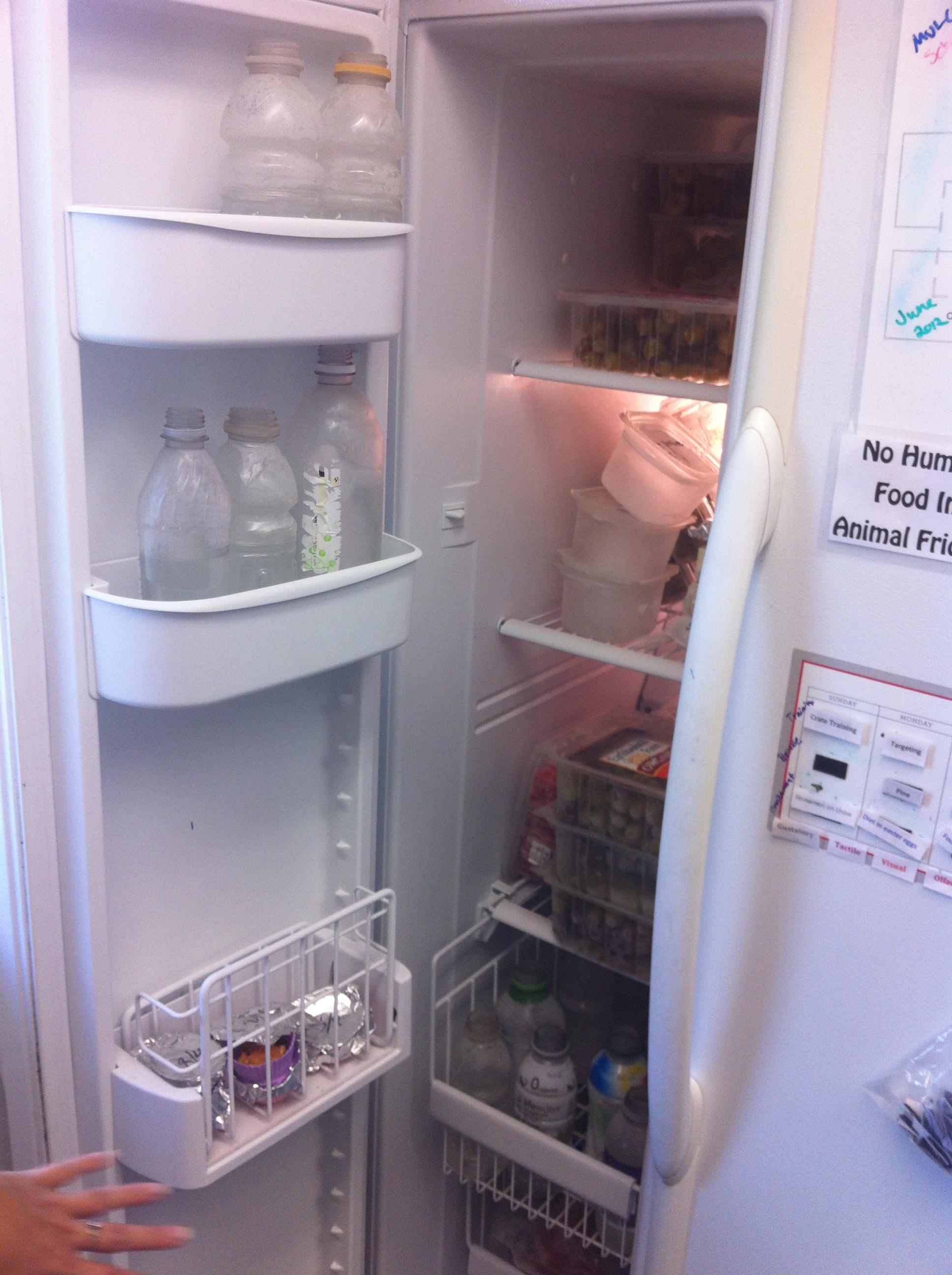
Of course, some of the animals love this weather! The ringtail lemurs at the Lemur Conservation Foundation in Myakka City, Florida, for example, are native to Madagascar's hot steamy deserts and find the recent heat to be exhilarating. In fact, Pattie Walsh, Director of Research and Operations, explained these guys prefer one specific yard over the other due to the drier, sunnier conditions, while their cohorts in the other, wetter and shadier yard-- the brown and mongoose lemurs native to rainforests--regularly take advantage of the misting system available to them.
For others, like the grizzly bears living in the, er, unbearable, road-buckling heat of Milwaukee this year, keepers must intervene with solutions. Dawn Fleuchaus, keeper at Milwaukee County Zoo, told me they run hoses from the holding roof for misting the bears, and even added a shade structure to the outdated exhibit. She stressed the importance of shade and, of course, lots of freezer space for making frozen treats.
St. Louis Zoo used garbage cans to make giant blocks of ice with food items frozen inside, which, as carnivore curator Steve Bircher explained to the St. Louis Post-Dispatch, serves double duty: cooling the animals and providing extra nutrition when they are least willing to consume.
Other solutions include pools. One keeper suggested designing pools into most new enclosures, and adding blocks of ice to them when temperatures soar. uShaka Sea World in South Africa designed each 'green room' stall for their fur seals so that it can function either dry or as a shallow pool. They also utilized shower heads to provide chilled 'rain'.
Whatever means zoos utilize to keep their animals cool, one thing is for certain. Designers need to provide flexibility and options. Opportunities for shade is a simple one, as well as water hook-ups for misting or spraying. Lots of room inside the holding building for storage and coolers, if needed. We can't possibly predict every need within an exhibit, so providing staff with the ability to get creative and easily implement changes is key.
Now I want to know...What's your hurricane plan?
Labor Day Exhibit Openings
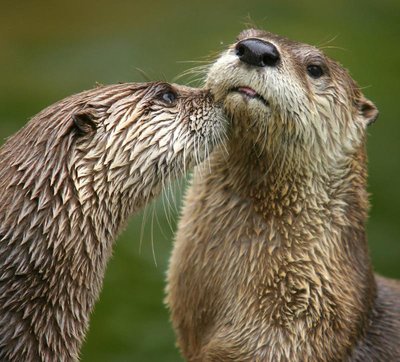 So far, I've heard about two new exhibits opening over the Labor Day weekend: National Zoo's newly renovated American Trail (link includes Portico Group's signature design fly-thru) and Central Florida Zoo's river otters (which I'll be covering in person--stay tuned!).
Traditionally, new exhibits are opened for the spring rush to experience an extra bump in attendance through the busy summer months. I wonder what is driving the timing of these two exhibits? Project delays? Or did they intentionally plan for Labor Day openings?
So far, I've heard about two new exhibits opening over the Labor Day weekend: National Zoo's newly renovated American Trail (link includes Portico Group's signature design fly-thru) and Central Florida Zoo's river otters (which I'll be covering in person--stay tuned!).
Traditionally, new exhibits are opened for the spring rush to experience an extra bump in attendance through the busy summer months. I wonder what is driving the timing of these two exhibits? Project delays? Or did they intentionally plan for Labor Day openings?
Summer as the high season for zoos and aquariums is not driven, as you might expect, by good weather--but rather the fact that kids are out of school. Weather is, of course, a factor in attendance, but even zoos, aquariums and theme parks located in yearlong mild climates see a bump during summer. Could these new exhibit openings be an attempt to correct the fall / winter slow down?
If you know of other new exhibits opening over Labor Day, let me know. And if you were involved in the opening date decision making, share your insight.
We're RELAUNCHED!
 Check us out! Don't we look fancy and new? Much thanks to our friend Mark Robertson who donated his time and talent to designing a new logo for the site, and to the photographers who allowed use of their beautiful photos for the background and header design. Please make sure to Follow us on Twitter and / or Facebook, and check out the new Shop where all proceeds go directly to the AZA's Conservation Endowment Fund.
Thanks for reading!
Check us out! Don't we look fancy and new? Much thanks to our friend Mark Robertson who donated his time and talent to designing a new logo for the site, and to the photographers who allowed use of their beautiful photos for the background and header design. Please make sure to Follow us on Twitter and / or Facebook, and check out the new Shop where all proceeds go directly to the AZA's Conservation Endowment Fund.
Thanks for reading!
Stacey Tarpley
Creator, Editor, Writer @ DesigningZoos.com
DZ visits South Florida Museum
 A while back, I posited (and yes, I've recently been watching a lot of Fringe) the future of science based institutions is a re-integration of the currently separated disciplines into a 'one-stop shop' of education and recreation. Here, guests will learn holistically about an ecosystem or geographical place in a fully immersive and hands-on atmosphere. I pointed to a small institution, Durham Museum of Life and Science, as an example. Today, I add another small institution to the list: Bradenton's South Florida Museum.
A while back, I posited (and yes, I've recently been watching a lot of Fringe) the future of science based institutions is a re-integration of the currently separated disciplines into a 'one-stop shop' of education and recreation. Here, guests will learn holistically about an ecosystem or geographical place in a fully immersive and hands-on atmosphere. I pointed to a small institution, Durham Museum of Life and Science, as an example. Today, I add another small institution to the list: Bradenton's South Florida Museum.
This institution focuses specifically on Bradenton and the greater Manatee County area, looking at its natural (all the way back to the early Cenozoic era--65 million years ago) and cultural history. The Museum is broken into essentially three distinct sections (to me): the planetarium, the museum, and the aquarium.
Bishop Planetarium is simply that--a traditional planetarium with 3-4 shows daily.
The museum houses an array of exhibit halls with interesting artifacts and dioramas including a Mastodon skeleton, Megalodon's jaws, pottery and arrow heads, gynecological instruments (yes, its true!), antique cameras, and a Model T. Believe me, it all makes sense when you visit.
Finally, the Parker aquarium is famously home to the world's oldest manatee, Snooty, and not much else. Of course, for me, Snooty was the draw. I was skeptical of a manatee aquarium with underwater viewing from an outdoor corridor along a space called the Spanish Plaza (which prominently features a statue of local hero, Hernando DeSoto, upon his steed), but the tank was crystal clear and nicely designed. Because of the proximity to the plaza, the viewing windows did have some glare, but the Museum minimized this with tasteful shade curtains.
On the upper level, guests can watch the manatees munch on lettuce and maybe catch one of the four daily aquarist talks. During these, Snooty shows off by nearly crawling out of the tank for a piece of sweet potato or carrot. He's lived his entire life in captivity and seems quite pleased to be hand-fed. In fact, his keeper explained, he will only eat food from the keepers--he refuses to graze in the tank like his cohorts.
Currently, Snooty shares his home with two male adolescents who are temporarily housed at the Museum. Both are rescue animals and have very limited interaction with the aquarium staff whose intent is to return them to the wild once they reach their optimum weight of 800 pounds. Each boy has about 100 pounds more to gain.
The manatee exhibit is themed as a marina, complete with docks and a mural. Its nothing special, but better than expected, and it seems the animals have plenty of space and choice--an off-exhibit pool is accessible to them.
Beyond the manatees, the aquarium literally has four small home-sized tanks with both fresh and saltwater critters. One tank is open topped and overflows to a lower tank with limited touch opportunities with sea stars and urchins. Additionally, there is a large and quite beautiful diorama with a hammerhead shark, fish, a mother manatee and her baby.
The Museum is at least an hour's experience without the planetarium show. I did enjoy my visit, and could see myself returning to explore more of the local history. The Museum is filled with information on lots of well designed interpretive panel found throughout. One day, when I'm looking for a good read on Bradenton, I'll be sure to come back. And Snooty, at 64, is still pretty cute.
South Florida Museum has plans for expansion in the coming years, and are gearing up for a capital campaign. Follow us for updates!
Portico's NY Aq "Ocean Wonders: Sharks!" Exhibit to Break Ground Soon
 After years of speculation and design changes and changes and changes, WCS officially announced today that the upcoming new attraction "Ocean Wonders: Sharks!" will break ground in October of this year. Designed as a collaboration between WCS's in-house design team and the Portico Group, the new exhibit will feature 500,000 gallons of saltwater within a 57,000 square foot building. The exhibit will be home to sharks, rays and sea turtles, and is expected to anchor a revitalization of historic Coney Island. The exhibit is expected to open in the spring of 2015.
After years of speculation and design changes and changes and changes, WCS officially announced today that the upcoming new attraction "Ocean Wonders: Sharks!" will break ground in October of this year. Designed as a collaboration between WCS's in-house design team and the Portico Group, the new exhibit will feature 500,000 gallons of saltwater within a 57,000 square foot building. The exhibit will be home to sharks, rays and sea turtles, and is expected to anchor a revitalization of historic Coney Island. The exhibit is expected to open in the spring of 2015.
Based on the 3D fly-through, the exhibits will be fairly immersive and feature New York as a recurring theme. Check out the fly-through here.
Congratulations to all involved!
DZ visits Zoo Miami!
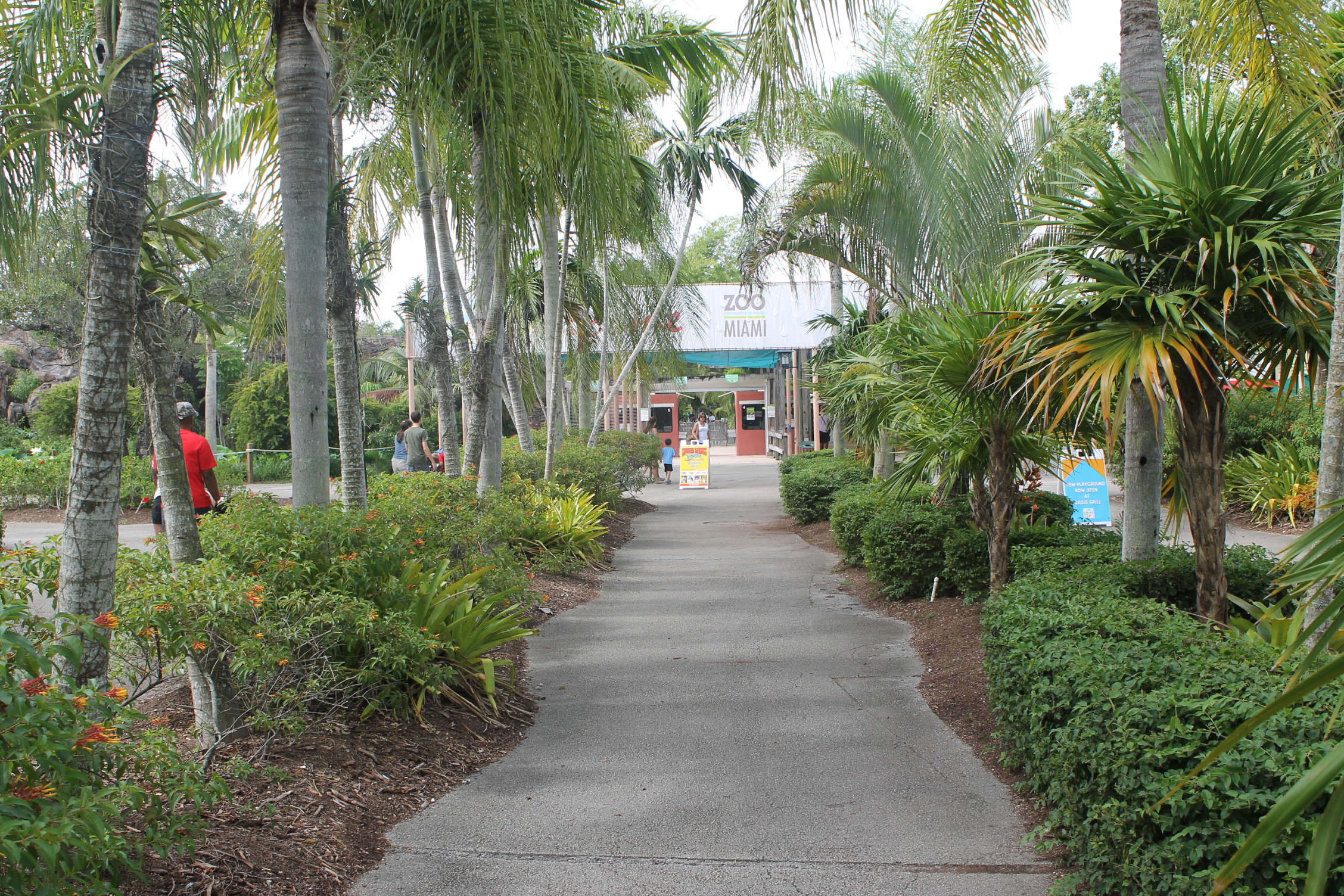 Admittedly, I hadn't heard much about Zoo Miami previous to my visit last week. And because of that, my expectations were quite low. Boy was I surprised!
Admittedly, I hadn't heard much about Zoo Miami previous to my visit last week. And because of that, my expectations were quite low. Boy was I surprised!
The Zoo is thoughtfully laid out in a bow-tie or figure 8, with the entry and exit occurring from a central 'tail' at the intersection of the 8. I like this basic configuration as it benefits both the guests, in terms of easy wayfinding, and the zoo, in possible revenue generation. By placing the Zoo's main dining location at the central intersection, guests pass by at least twice daily, and possibly up to 4x.
The main dining area is surrounded by a large play area with water play, as well as lovely views to a natural lake. Both water play and water views are an essential part of the Zoo's identity--and set it apart from many I've visited. Many opportunities for sprays and mists are found throughout the Zoo, which I am imagine are essential in the tropical locale.
Although the history of the Zoo spans to the mid-1950s, the physical zoo we now know opened in the early 1980s. One of the largest zoos in the country, Zoo Miami boasts over 320 developed acres with an additional 400 acres untouched. Its a large zoo, and in 2.5 sweaty hours, I only saw the northern loop.
Because the zoo is relatively young, its original design has remained basically intact. Following the trends in exhibitry of the late 1970s to the early 80s, the zoo is experienced, by and large, via a wide main path (the figure 8 mentioned previously). Along this path, exhibits are stacked providing prototypical long unobstructed viewing associated with that time. However, since then the exhibits have mostly been updated (EDIT: Exhibits were in fact designed this way originally!) to remove the back fences providing beautiful long, uninterrupted views, sometimes into adjacent exhibits. This is especially effective in the rhino exhibit, where elephants can be seen roaming in the distance.
Zoo Miami recently underwent a master plan with the resultant Amazon & Beyond exhibit opening in December, 2008. This exhibit, designed by Jones & Jones and EDSA, encompasses several habitat types and features a multitude of species including jaguars, giant river otters, monkeys, birds, and reptiles. The exhibit is over 27 acres, cost $50 million, and includes both indoor and outdoor exhibit experiences. The exhibit is overall well done, but did leave the impression that, as with most projects, the initial design was over-ambitious and over budget--causing some unfortunate, and questionable, cuts.
For example, the small animal exhibits were abundant. In fact, each habitat type must have been supported by at least 6 small, or jewel, exhibits as well as several bird exhibits. However, these exhibits felt almost aquarium-like--flat walls with signage above a square viewing window. These exhibits, shamefully, did not draw me in, and after about the 8th jewel case, I started walking by them completely, eyes glazed over. I would've suggested a cut to the species list in favor of a more thematic guest experience, drawing in the guests to a few featured exhibits rather than the repetitive cases.
I would like to point out a cool little design at the jaguar exhibit, where between two outdoor yards, the cats are able to transfer over head. The jaguars also had a nice pool with a semi-underwater viewing window. Unfortunately for me, they weren't on exhibit while I was there.
The giant river otter exhibit was also nicely designed with both overwater and semi-underwater viewing. Of course, it didn't hurt that they'd just been fed when I arrived, so were characteristically energetic and entertaining.
The zoo has a lot of space for growth. So much so that the long walks between exhibits became cumbersome and tiring, despite the beautiful tropical landscape and non-exhibit hidden gems, like thematically inspired sculpture. However, I commend Zoo Miami for taking advantage of this possible detriment by providing various forms of transport for a small fee. My favorite was the Safari Cycles--vehicles reminiscent of Model T cars requiring the riders to power by pedal. The zoo also has a Monorail--which I didn't see in use, and tram tours.
Overall, a very nice experience and one that apparently many Miami tourists miss. With annual attendance slowly nearing the 1 million mark, Zoo Miami certainly has the opportunity for growth within its market with targeted strategies directed at the South Beach set. Perhaps the upcoming Florida: Mission Everglades exhibit will increase awareness of the zoo, allowing them to break free of their stigma as a local attraction--as I do believe they could double their attendance with the experience they currently offer.









